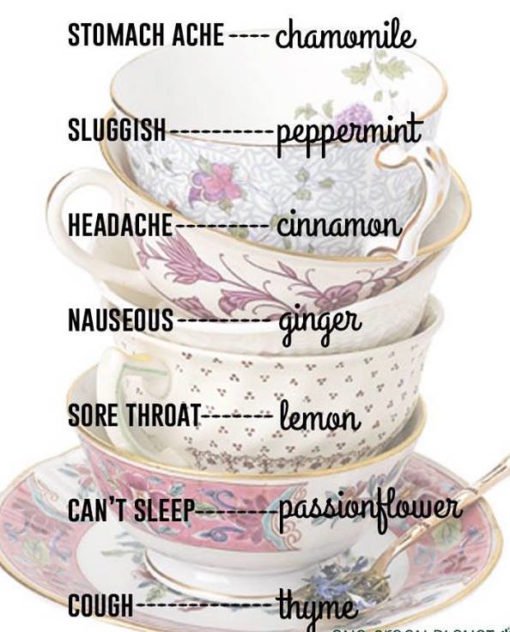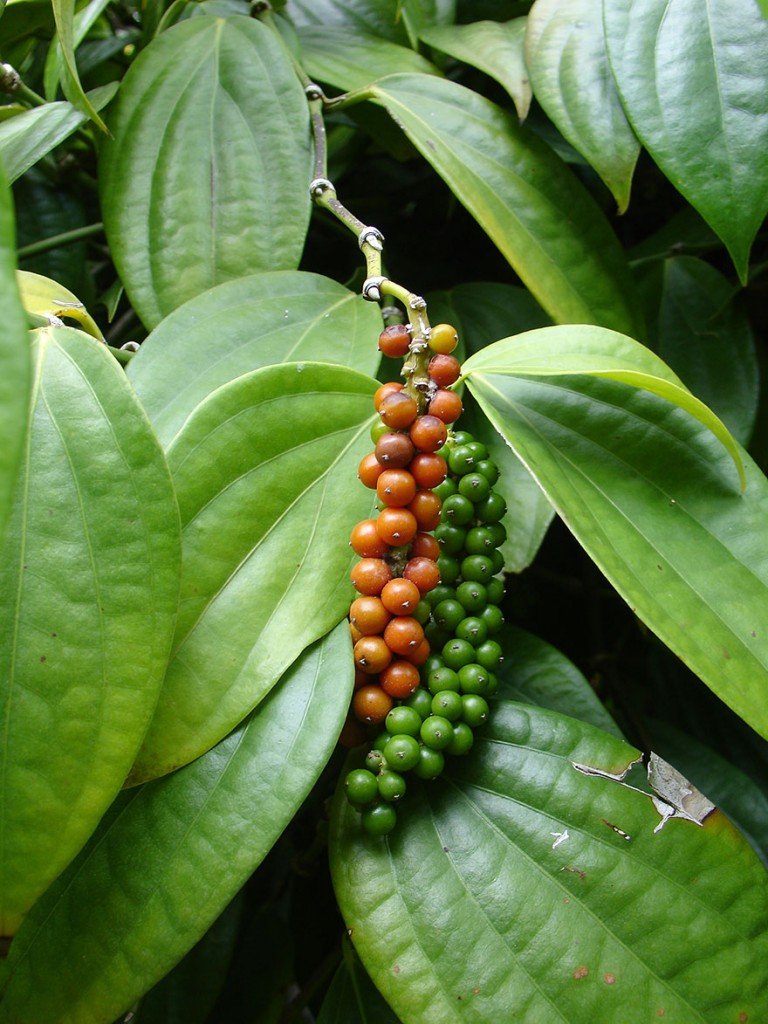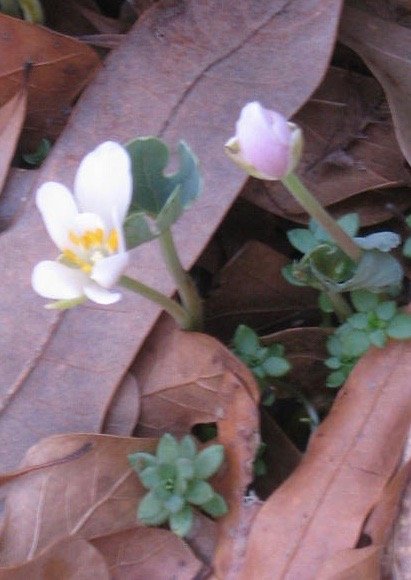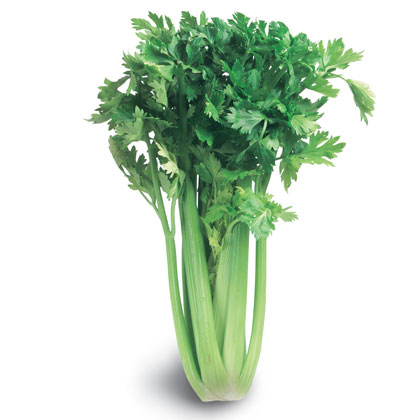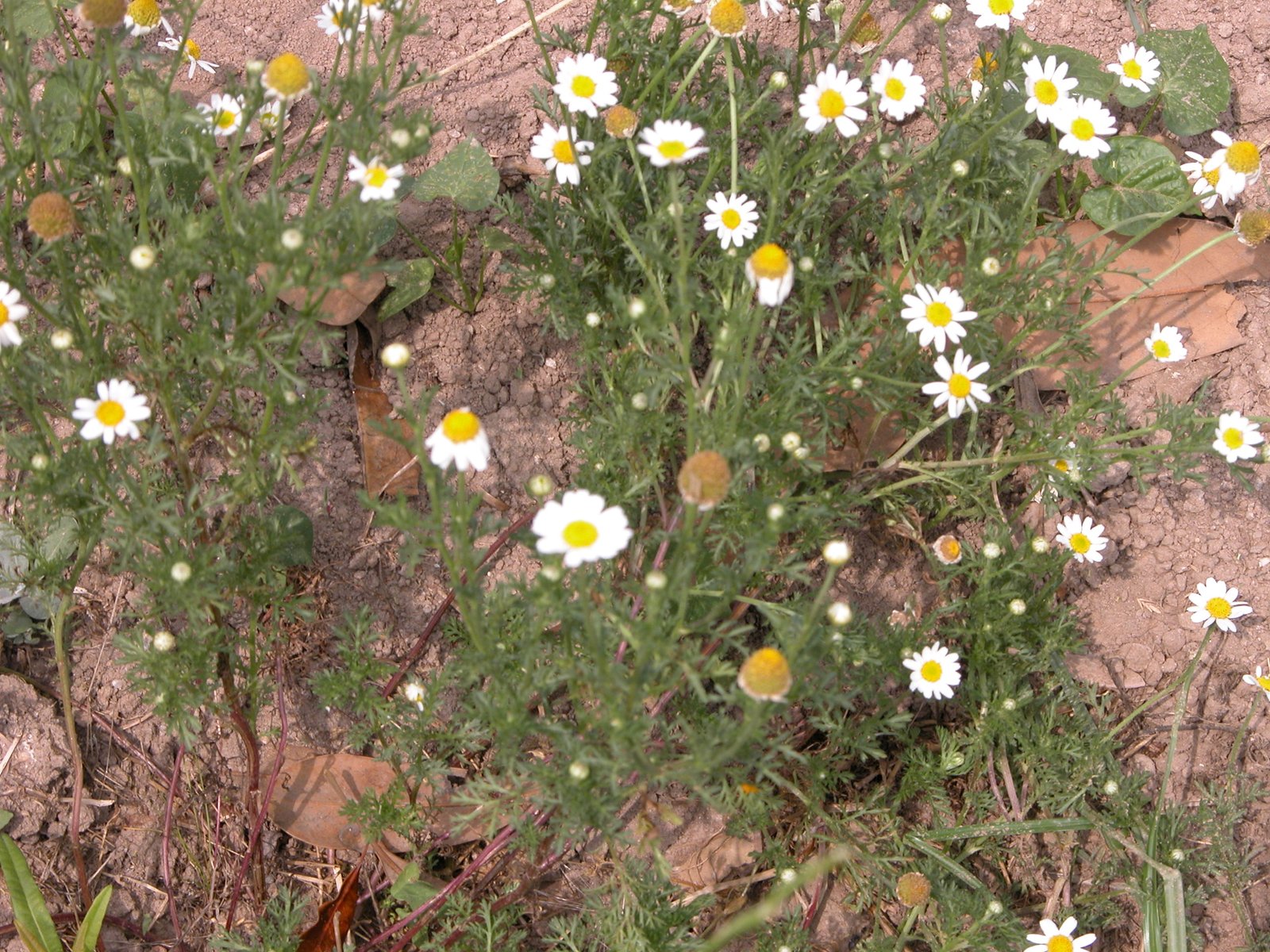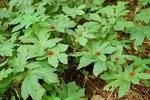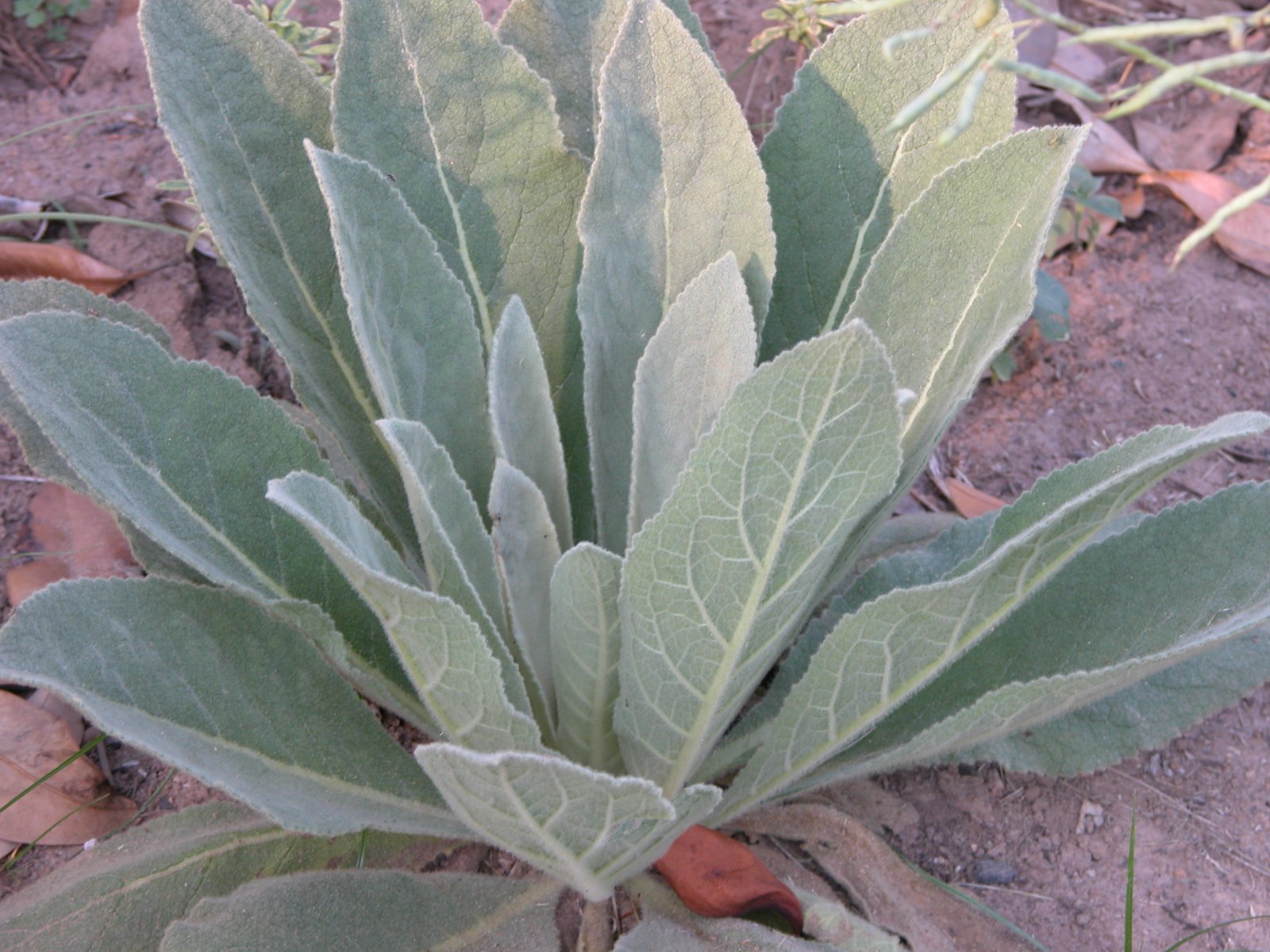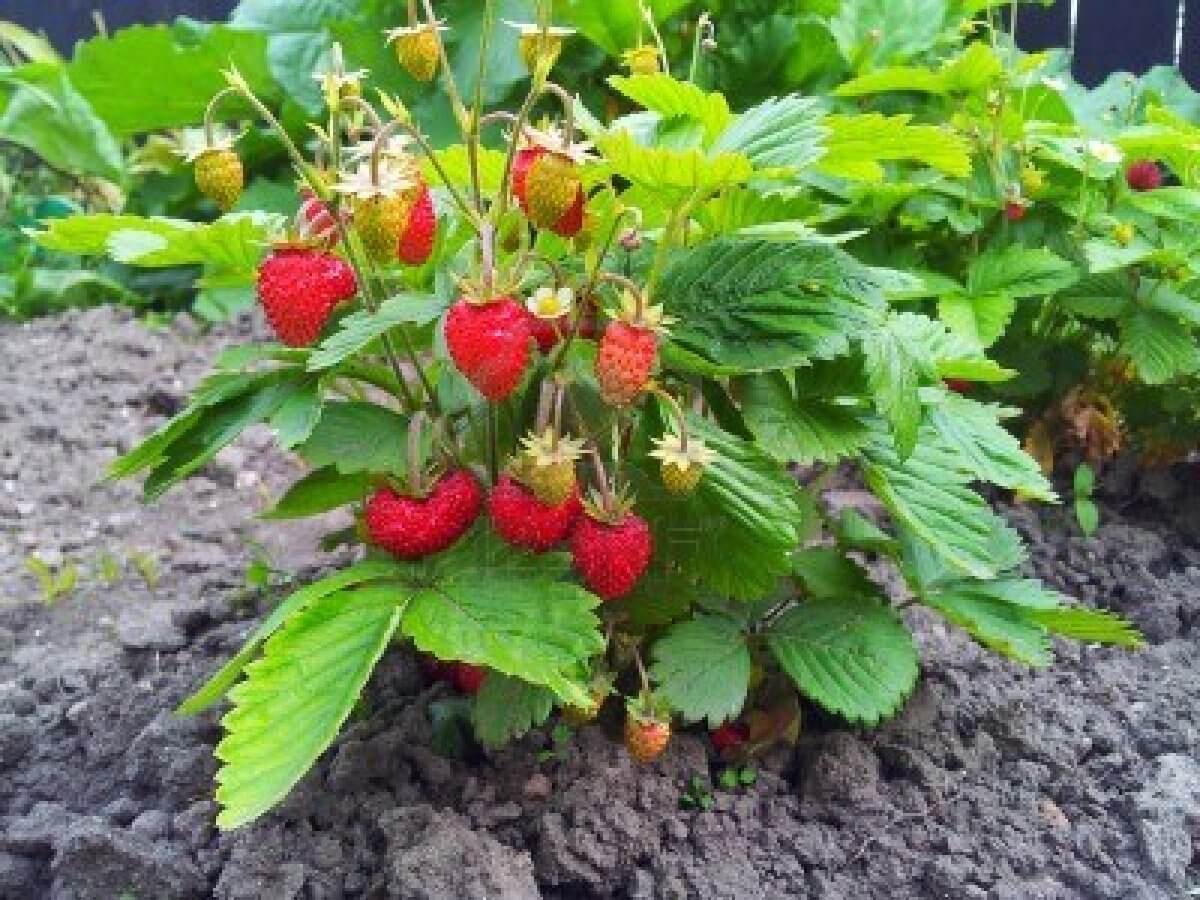HERBS

The best six doctors anywhere, and no one can deny it,
Are sunshine, water, rest, and air and exercise and diet.
These six will gladly you attend, if only you are willing.
Your ills they’ll mend, your cares they’ll tend,
And charge you not a shilling.
Links to other posts:
11 Herbs and Spices that Keep Disease at Bay
Herbs for Repelling Insects
Herbs for the Skin
Herbs to Reduce Stress
Herbs for the Lungs
Cooking Healthy With Herbs
Herbal Activities with Kids
Smudging and Blessing Herbs
Herbal Teas for Stress and Anxiety
Herbal Bath Blends
Herbal Rubs for Poultry Beef and Fish
Herbal Butters
Talk about Teas
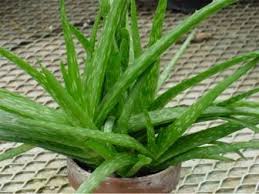
Aloe is one of the best herbs to clean out the colon and one of the finest body cleansers. Will expel pinworms. Used on sores, cuts, burns, and wounds. Excellent remedy for piles and hemorrhoids.
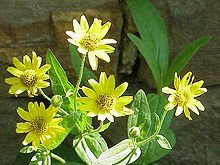
Arnica Montana is an herb used to cure wounds. It has been used for its anti-inflammatory and calming effects. Do not confuse with Arnica Chamissonis, which isn’t a medicinal herb. Arnica has antiseptic, anti-inflammatory, antibacterial, decongestant and fungicide properties. It stimulates the forming of the granular tissues thus accelerating the healing process. It eliminates microorganisms and keeps bacteria and pathogenic funguses from multiplying. Besides its use as a tea, it works as an infusion and a poultice for the treatment of external wounds and bruises. Sores and open wounds can be treated with an arnica infusion made with water. Arnica is used for asthma and any respiratory issues. It is fine to take mild teas of this plant but with caution. NOT to be used by pregnant women.
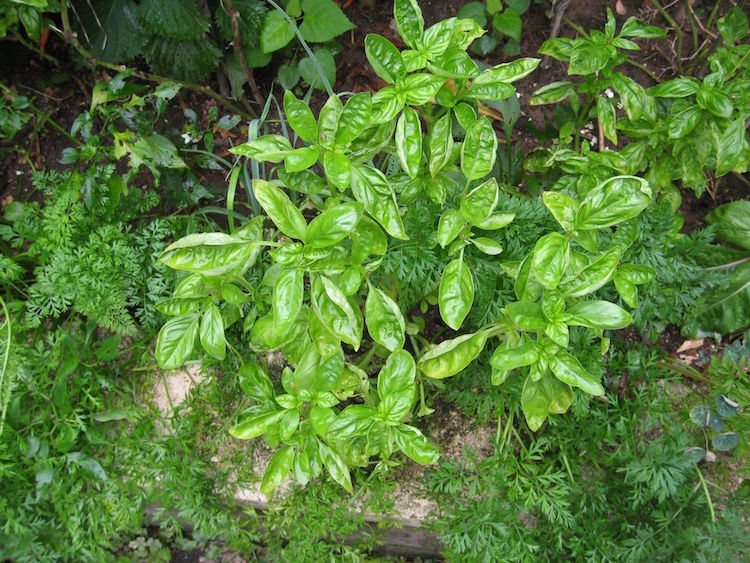
Basil is an herbal carminative, which can relieve gas and soothe stomach upsets. Research indicates that basil helps prevent aging. The fresh leaves are mildly sedative. It repels flies and fleas and is known to relieve upset stomach. Known as an herbal remedy for diseases of the heart, brain, lungs, kidney, and bladder. It is mixed with borage in a tea as a tonic to revive lowered vitality. The dried leaves were made into a snuff to clear the head and as a remedy for headaches and colds. An infusion of basil with wine will close enlarged pores in the skin. Holy basil from India is known to alleviate the symptoms of diabetes. Ease a headache by drinking tomato juice blended with fresh basil. Basil is powerful for your health and beauty.
- Tea – Infuse tea with the aromas of fresh basil! Collect three tablespoons of chopped fresh basil and add to a teapot. Pour two cups of boiling water into the teapot and let steep for five minutes. Pour tea through sieve to remove leaves. Sweeten with honey.2. Upset Stomach Relief – Use basil to help relieve an upset stomach. Basil contains a compound in its oils called eugenol, helpful in treating gastric ailments. 3. Cancer Prevention – Due to basil’s high anti-oxidant content, it may be useful in the prevention of cancer. Phenolics are a group of organic compounds that account for most of basils antioxidant properties. Anthocyanins are a subtype of phenolics and responsible for the pigmentation of purple basils. Purple basils contain up to 126 milligrams of phenolics per gram, which is half the amount found in green tea. Ultimately, Phenolics are linked to cancer prevention. Basil’s apigenen content helps reduce DNA oxidative damage, stalls growth of leukemia cells, and induces cancer cell death.4. Homemade Pasta – Add fresh basil leaves to pasta dough before shaping them into noodles. 5. Acne Treatment – Basil acts as an antiseptic and helps clear bacteria and improves circulation to the skin, giving you a healthy glow. Basil’s oils pack the antiseptic power. You can benefit from ingesting basil or applying it topically.6. Ice Cubes – Give ice cubes a boost by adding leaves to the ice cube tray. After freezing, add the cubes to a glass of water to infuse it with a delicately fresh taste. 7. Immune system boost – Basil contains apigenin, a bioflavonoid generally found in leafy plants and vegetables that contributes to a healthy immune system.8. Salads and Sandwiches – Give salads and sandwiches a big boost by adding fresh basil to the mix.9. Heart Health – Basil is a good source of magnesium, that allows muscles and blood vessels to relax, improves blood flow and reduces the risk of irregular heart rhythms.10. Ice Cream – Take 2 bananas, peel, chop into pieces, place them in a bag, and put in the freezer. Once frozen, place pieces with a handful of basil leaves in food processor and blend. Add honey or another sweetener to taste.
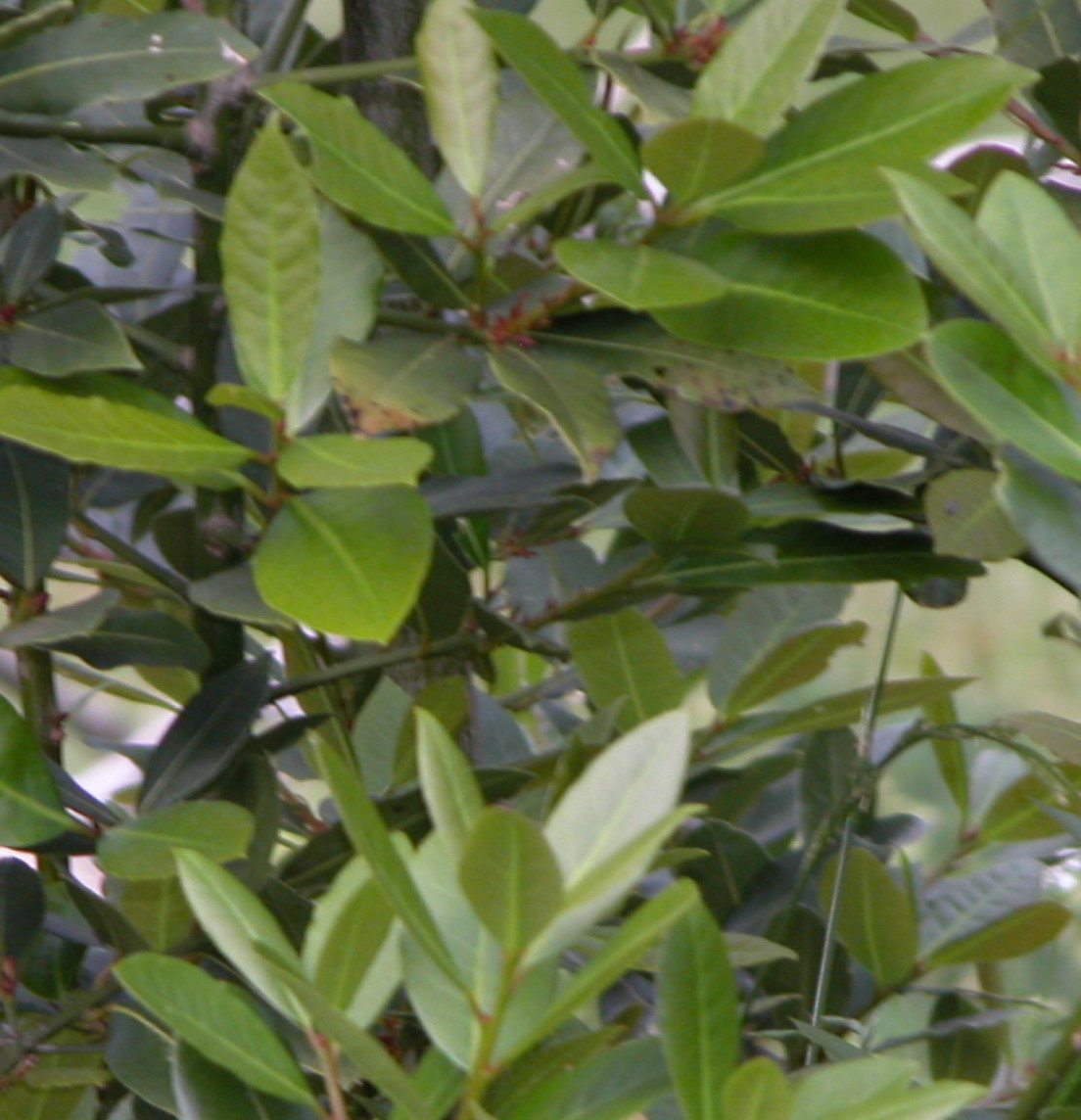 BAY LEAVES – Bay Leaves will help you get rid of anxiety, tension, every day stress and help you relax. Put a dry bay leaf in the ashtray, light it and leave the room for 10 minutes. When you return, the room will be full of fragrant rich smoke. The bay leaf releases substances that boost positive energy, relieve stress and help us relax. Inhale deep and relax.
BAY LEAVES – Bay Leaves will help you get rid of anxiety, tension, every day stress and help you relax. Put a dry bay leaf in the ashtray, light it and leave the room for 10 minutes. When you return, the room will be full of fragrant rich smoke. The bay leaf releases substances that boost positive energy, relieve stress and help us relax. Inhale deep and relax.
 Bergamot is also known as Bee Balm or Oswego tea to the Indians. Leaves are used in salads. Known to relieve stomach troubles, the symptoms of nausea and vomiting. Inhaling the vapor relieves nasal congestion. It is mildly relaxing, and a remedy for sore throats, colds, and chest complaints. It is revitalizing in a hot bath.
Bergamot is also known as Bee Balm or Oswego tea to the Indians. Leaves are used in salads. Known to relieve stomach troubles, the symptoms of nausea and vomiting. Inhaling the vapor relieves nasal congestion. It is mildly relaxing, and a remedy for sore throats, colds, and chest complaints. It is revitalizing in a hot bath.
Black pepper is one of the oldest and most commonly used spices. It has a stimulating effect on the digestive organs and produces an increased flow of saliva and digestive juices. Black pepper can help relieve indigestion as well as flatulence. It also helps improve absorption and utilization of curcumin, which the body normally does not absorb very well.
Blood Root – Indians used it for red dye. Large dose induces vomiting. Is an anti-bacterial used in commercial preparations to counteract dental plaque and gum disease. Two drops on a lump of sugar for a sore throat. Used for respiratory ailments. A tea is made from the roots for sore throat, fever and rheumatism. The root was chewed, mixed with saliva and used for burns, skin ulcers, and fungal infections. Excellent expectorant and anti-spasmodic. It stimulates respiration, raises blood pressure, and kills oral bacteria. Potentially harmful in oral hygiene products. Rhizomes are harvested after flowering.
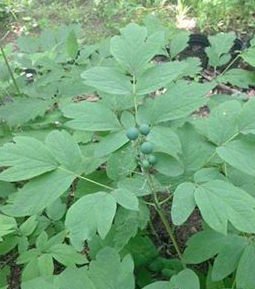 Blue cohosh is primarily used for menstrual irregularities, amenorrhea and dysmenorrhea, and to ease the pangs of childbirth. While not related, both black and blue cohosh are often found growing in close proximity and both have similar demenagogic, antispasmodic properties. Black cohosh is thought to have more estrogenic action while blue cohosh is more of an actual blood mover. While, as the name “papoose root” suggests, it can be used immediately before or during childbirth, usually as a tincture to ease childbirth, it should not be used during the first and second trimesters of pregnancy.
Blue cohosh is primarily used for menstrual irregularities, amenorrhea and dysmenorrhea, and to ease the pangs of childbirth. While not related, both black and blue cohosh are often found growing in close proximity and both have similar demenagogic, antispasmodic properties. Black cohosh is thought to have more estrogenic action while blue cohosh is more of an actual blood mover. While, as the name “papoose root” suggests, it can be used immediately before or during childbirth, usually as a tincture to ease childbirth, it should not be used during the first and second trimesters of pregnancy.
Borage Used to banish sorrow and depression and bring joy to the heart. A cooling soothing anti-inflamatory with diuretic and diaphoretic(sweating) effects. A restorative drink and will break a fever. Borage oil may lower blood pressure. The Romans believed the herb to be an antidepressant, and ancient Celtic warriors took it for courage.
Caraway was used to scent perfumes and soaps. The Greeks used it for upset stomachs.
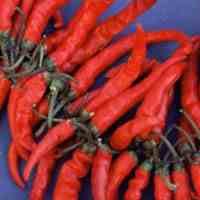 Cayenne – Red pepper is one of the most stimulating herbs known to man! Chili peppers are a wonderful tonic. The ground dried fruits are a stimulant, a disinfectant, antispasmodic, and it helps to relieve joint pain. It causes no harm and has no unhealthy reaction. A Remedy for fevers. It is good in all forms of low diseases. The key to success in medicine is stimulation and capsicum is the great stimulant. It “makes the fire of life burn more brightly.” It is good in profound shock, cures rheumatism and is powerful to arrest hemorrhage from the mucous membranes. Cayenne pepper has wonderful cardiovascular benefits, including lowering blood pressure. Famed herbalist Doctor John Christopher noted that a couple of teaspoons of cayenne pepper never failed to stop a heart attack in only minutes. When added to food, cayenne increases appetite, improves digestion and relieves gas, nausea, and indigestion. It thins phlegm, eases its passage from the lungs and is one of the best liniments. A dose of cayenne tea will generally remove a cold. In Mexico the people are very fond of it and their bodies get saturated with it. If one of them dies on the prairie, the vultures will not touch the body impregnated with capsicum. It cannot be equaled when a powerful and prolonged stimulant is needed. The entire circulation is affected. In all diseases capsicum is invaluable in the prescription as a toning agent that helps the system to throw off disease and reestablish equilibrium. In the onset of chills and colds it is the sovereign remedy! Capsicum is indicated in all low-grade fevers and prostrating diseases. It increases the power of all other agents, helps the digestion when taken with meals, and arouses all the secreting organs. African bird pepper is the purest and best stimulant known, has a pungent taste and is the most persistent heart stimulant ever known, being prompt in its effect. Through the circulation its influence is manifest through the whole body; the heart first, next the arteries, then the capillaries and the nerves. Used to halt infections, as a pain killer, and increases circulation. Valuable in treating herpes, psoriasis, and shingles. Absolutely one of my favorites. Cayenne pepper has wonderful cardiovascular benefits, including lowering blood pressure. Famed herbalist Doctor John Christopher noted that a couple of teaspoons of cayenne pepper never failed to stop a heart attack in only minutes. When added to food, cayenne increases appetite, improves digestion and relieves gas, nausea, and indigestion. It also thins phlegm and eases its passage from the lungs.
Cayenne – Red pepper is one of the most stimulating herbs known to man! Chili peppers are a wonderful tonic. The ground dried fruits are a stimulant, a disinfectant, antispasmodic, and it helps to relieve joint pain. It causes no harm and has no unhealthy reaction. A Remedy for fevers. It is good in all forms of low diseases. The key to success in medicine is stimulation and capsicum is the great stimulant. It “makes the fire of life burn more brightly.” It is good in profound shock, cures rheumatism and is powerful to arrest hemorrhage from the mucous membranes. Cayenne pepper has wonderful cardiovascular benefits, including lowering blood pressure. Famed herbalist Doctor John Christopher noted that a couple of teaspoons of cayenne pepper never failed to stop a heart attack in only minutes. When added to food, cayenne increases appetite, improves digestion and relieves gas, nausea, and indigestion. It thins phlegm, eases its passage from the lungs and is one of the best liniments. A dose of cayenne tea will generally remove a cold. In Mexico the people are very fond of it and their bodies get saturated with it. If one of them dies on the prairie, the vultures will not touch the body impregnated with capsicum. It cannot be equaled when a powerful and prolonged stimulant is needed. The entire circulation is affected. In all diseases capsicum is invaluable in the prescription as a toning agent that helps the system to throw off disease and reestablish equilibrium. In the onset of chills and colds it is the sovereign remedy! Capsicum is indicated in all low-grade fevers and prostrating diseases. It increases the power of all other agents, helps the digestion when taken with meals, and arouses all the secreting organs. African bird pepper is the purest and best stimulant known, has a pungent taste and is the most persistent heart stimulant ever known, being prompt in its effect. Through the circulation its influence is manifest through the whole body; the heart first, next the arteries, then the capillaries and the nerves. Used to halt infections, as a pain killer, and increases circulation. Valuable in treating herpes, psoriasis, and shingles. Absolutely one of my favorites. Cayenne pepper has wonderful cardiovascular benefits, including lowering blood pressure. Famed herbalist Doctor John Christopher noted that a couple of teaspoons of cayenne pepper never failed to stop a heart attack in only minutes. When added to food, cayenne increases appetite, improves digestion and relieves gas, nausea, and indigestion. It also thins phlegm and eases its passage from the lungs.
 Catnip helps to ease colicky pain, upset stomach, gas, and spasms. Has a calming effect on humans. Chewed as a remedy for toothache. Has a mild sedative effect and suggested for treating ADD or hyperactivity. A mosquito repellent. Catnip (Nepeta cataria) is an aromatic, herbaceous perennial, native to Europe. The branching stems are square and covered in fine hairs as are the leaves are opposite and heart shaped. They are grey green in color and the edges are bluntly toothed. The flowers are white often with reddish-purple dotted markings and grow in clusters at the ends of stem branches. 1) Catnip has anti-anxiety, antispasmodic, antitussive, aromatic, astringent, carminative, diaphoretic, emmenagogue, nervine, refrigerant, sedative, stimulant, stomachic and tonic properties. The herb contains volatile oils including citronellol a natural insect repellent and nepetalactone (which to humans acts as a sedative, antispasmodic and febrifuge) It has antibacterial properties and is a natural repellent. Nepetalactone is the chemical that lies behind the reason that most cats adore catnip. Oils in catnip inhibit the growth of gram-positive food-borne bacteria. The herb contains mono-terpenoids including nepetalic acid, iridoids including epideoxyloganic acid, iridoids add bitter principles to herbs and aid the herbs constituents to disperse evenly in water. Catnip contains tannins, mucilage, sugars including dextrin and crystalline waxes. Calcium – 616mg Magnesium – 207mg Manganese – 3.74mg Iron – 13.8mg Phosphorus – 241mg Potassium – 2,350mg Riboflavin (B2) – 0.36mg Selenium – 1.23mg Vitamin A – 4,000 IU Vitamin C – Trace 2) A 100g dry weight of catnip contains 60 calories and 17.4g of dietary fibre, plus the following vitamins and minerals: herewith; for the smell of it is so pleasant unto them, that they rub themselves upon it, & wallow or tumble in it’. The Catnip effect is exhibited by wild cats including lions, tigers, cougars and the lynx, the reaction is down to plant chemistry; Catnip contains an organic compound called nepetalactone, a mild sedative to most people. Rubbing the head or body against it, licking and eating it, rubbing their heads and chins on it whilst they’re doing it, they’re in a heightened state looking like they’re spaced out. The effect can last up to 15 minutes. Once the cats have had the experience, they need at least an hour before they will get ‘excited’ by the catnip again. In some cats it can cause aggression and agitation. Could help to ease piles. 18th century herbalist Sir John Hill echoed the emmenagogue properties put forward by the likes of Culpepper writing that ‘It is an excellent women’s medicine; an infusion of it is good against hysteric complaints, vapors and fits, and it moderately promotes the menses.’
Catnip helps to ease colicky pain, upset stomach, gas, and spasms. Has a calming effect on humans. Chewed as a remedy for toothache. Has a mild sedative effect and suggested for treating ADD or hyperactivity. A mosquito repellent. Catnip (Nepeta cataria) is an aromatic, herbaceous perennial, native to Europe. The branching stems are square and covered in fine hairs as are the leaves are opposite and heart shaped. They are grey green in color and the edges are bluntly toothed. The flowers are white often with reddish-purple dotted markings and grow in clusters at the ends of stem branches. 1) Catnip has anti-anxiety, antispasmodic, antitussive, aromatic, astringent, carminative, diaphoretic, emmenagogue, nervine, refrigerant, sedative, stimulant, stomachic and tonic properties. The herb contains volatile oils including citronellol a natural insect repellent and nepetalactone (which to humans acts as a sedative, antispasmodic and febrifuge) It has antibacterial properties and is a natural repellent. Nepetalactone is the chemical that lies behind the reason that most cats adore catnip. Oils in catnip inhibit the growth of gram-positive food-borne bacteria. The herb contains mono-terpenoids including nepetalic acid, iridoids including epideoxyloganic acid, iridoids add bitter principles to herbs and aid the herbs constituents to disperse evenly in water. Catnip contains tannins, mucilage, sugars including dextrin and crystalline waxes. Calcium – 616mg Magnesium – 207mg Manganese – 3.74mg Iron – 13.8mg Phosphorus – 241mg Potassium – 2,350mg Riboflavin (B2) – 0.36mg Selenium – 1.23mg Vitamin A – 4,000 IU Vitamin C – Trace 2) A 100g dry weight of catnip contains 60 calories and 17.4g of dietary fibre, plus the following vitamins and minerals: herewith; for the smell of it is so pleasant unto them, that they rub themselves upon it, & wallow or tumble in it’. The Catnip effect is exhibited by wild cats including lions, tigers, cougars and the lynx, the reaction is down to plant chemistry; Catnip contains an organic compound called nepetalactone, a mild sedative to most people. Rubbing the head or body against it, licking and eating it, rubbing their heads and chins on it whilst they’re doing it, they’re in a heightened state looking like they’re spaced out. The effect can last up to 15 minutes. Once the cats have had the experience, they need at least an hour before they will get ‘excited’ by the catnip again. In some cats it can cause aggression and agitation. Could help to ease piles. 18th century herbalist Sir John Hill echoed the emmenagogue properties put forward by the likes of Culpepper writing that ‘It is an excellent women’s medicine; an infusion of it is good against hysteric complaints, vapors and fits, and it moderately promotes the menses.’
3) herbalist John Gerard described how the herb came by the name saying ‘cats are very much delighted. Cats that are sensitive to nepetalactone show a range of behaviors including sniffing the herb. 4) Culpepper described how decoctions of the herb could ease headaches; take away wind and put into ointment 5) The natural insecticide properties of catnip make it ideal to add to powders and sachets to help deter ants and flea beetles from the home.
By far the most popular use for catnip today is for cats. It is used to fill stuffed toys for cats to play with. Interestingly, if you give a cat the herb to smell it produces a stimulating effect on the cat, but if the herb is given as an infusion or added to food it will have a sedative effect on the cat. Some cat owners may worry about the possible hallucinogenic effects of catnip, but it is not a drug nor is it addictive to cats, the herb excites receptors in the nose that cats have.
Celery is used when there is incontinence of urine and for liver troubles, rheumatism, neuralgia, and nervousness.
Chamomile – Calms digestive upsets, is a remedy for fever and chills, accelerates wound healing, is an insect repellent, manages peptic ulcers, and highlights blond hair. The flowers are used in a tea for a calming effect and to sleep.
Chickweed – Helps when we need to gently dissolve something or to cool off inflamed tissues. Will dissolve ovarian cysts.
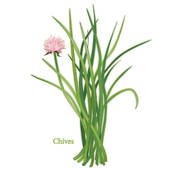 Chives – Herb chives or garlic chives may be used for a mild onion flavor in salads, sandwiches, and soups. The leaves are mildly antiseptic and have a tonic effect on the kidneys. Known to relieve rheumatism. It stimulates the appetite and helps lower high blood pressure. Is a source of calcium and the flower is rich in vitamin A. Bunches of chives hung in your home were used to drive away diseases and evil.
Chives – Herb chives or garlic chives may be used for a mild onion flavor in salads, sandwiches, and soups. The leaves are mildly antiseptic and have a tonic effect on the kidneys. Known to relieve rheumatism. It stimulates the appetite and helps lower high blood pressure. Is a source of calcium and the flower is rich in vitamin A. Bunches of chives hung in your home were used to drive away diseases and evil.
Chocolate Used for angina and to lower high blood pressure.
 Cinnamon contains a compound that kills a variety of illness causing bacteria, including the E.coli, Salmonella, and Staphylococcus aureas. Research shows that cinnamon can also stop the growth of the Asian flu virus. Cinnamon helps lower blood pressure and helps regulate menstrual cycles. In addition, cinnamon has a tranquilizing effect that helps reduce anxiety and stress.
Cinnamon contains a compound that kills a variety of illness causing bacteria, including the E.coli, Salmonella, and Staphylococcus aureas. Research shows that cinnamon can also stop the growth of the Asian flu virus. Cinnamon helps lower blood pressure and helps regulate menstrual cycles. In addition, cinnamon has a tranquilizing effect that helps reduce anxiety and stress.
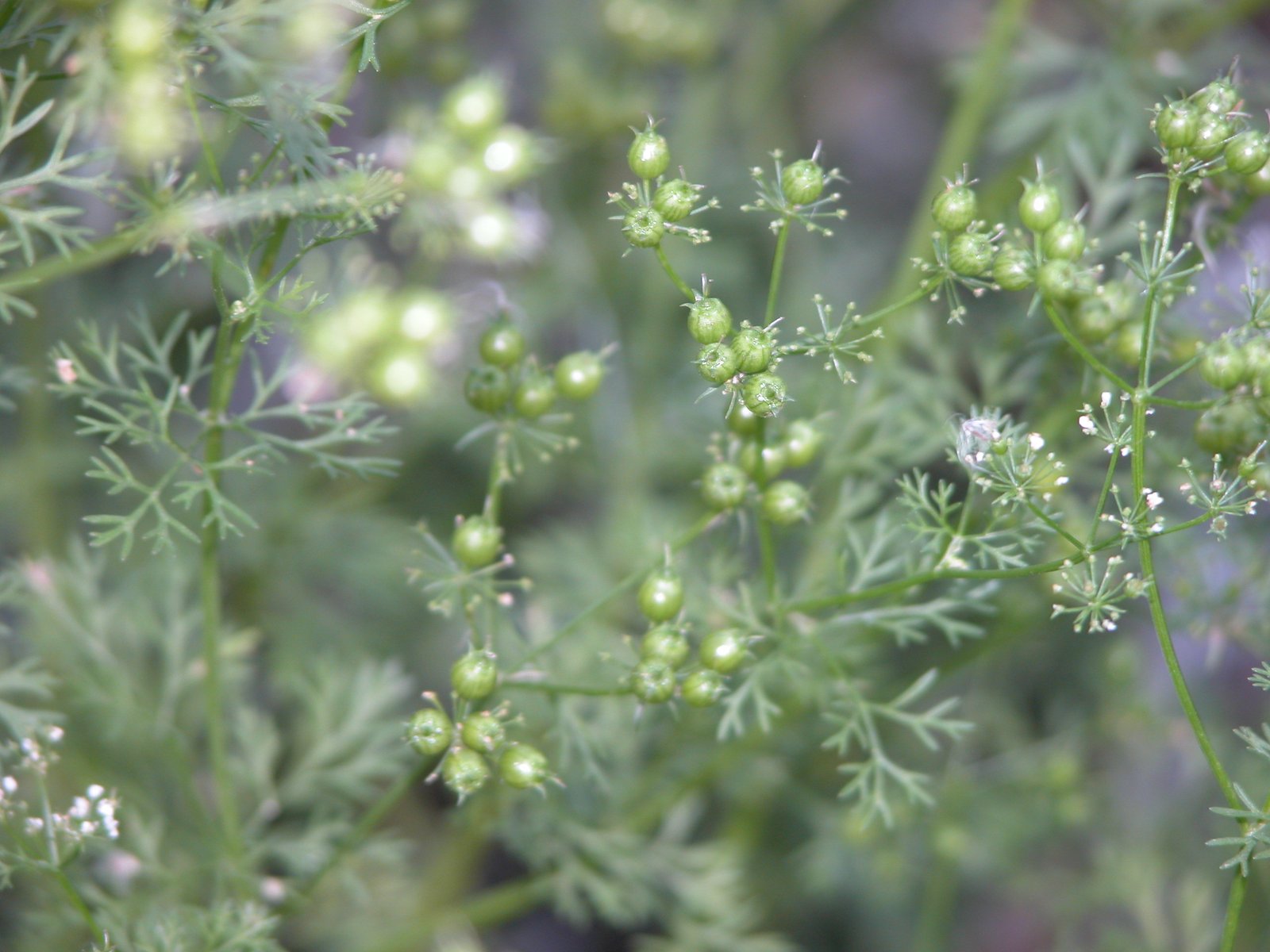 CILANTRO FLUSHES MERCURY FROM THE BODY. High mercury levels stress the heart and other important organs. 1 fistful of organic cilantro a day for 10 days straight will flush your body of serious heavy metals that are nearly impossible to avoid in this generation. There is a compound in cilantro that mercury (and other heavy metals) binds to and then gets released through the urine as a natural chelation technique. The body cannot function properly w/ heavy metal accumulation and this is the cheapest way to solve it and release them from your body! Cilantro is your ally! Is a good stomach tonic and strengthening to the heart. Expels wind from the bowels. It helps prevent cardiovascular damage.Has anti-diabetic activity and is a strong anti-oxidant activity. Has a blood sugar lowering effect. Possesses anti-anxiety effects. Improves sleep quality. Anti-fungal and anti-bacterial activity. A natural internal deodorant.
CILANTRO FLUSHES MERCURY FROM THE BODY. High mercury levels stress the heart and other important organs. 1 fistful of organic cilantro a day for 10 days straight will flush your body of serious heavy metals that are nearly impossible to avoid in this generation. There is a compound in cilantro that mercury (and other heavy metals) binds to and then gets released through the urine as a natural chelation technique. The body cannot function properly w/ heavy metal accumulation and this is the cheapest way to solve it and release them from your body! Cilantro is your ally! Is a good stomach tonic and strengthening to the heart. Expels wind from the bowels. It helps prevent cardiovascular damage.Has anti-diabetic activity and is a strong anti-oxidant activity. Has a blood sugar lowering effect. Possesses anti-anxiety effects. Improves sleep quality. Anti-fungal and anti-bacterial activity. A natural internal deodorant.
 Curcumin/ Tumeric (curcumin) is the ingredient responsible for the turmeric root’s orange pigment) and turmerones (its oils) are believed to slow the progress of Alzheimer’s disease; prevent the spread of certain types of cancer (prostate, breast, colon); promote wound healing; alleviate arthritis and inflammation; and enhance liver detoxification. And those are just the leading benefits. The incidence of Alzheimer’s is 4.4 times greater in the U.S. than it is in India. UCLA researchers have not concluded that it’s all due to turmeric, but research seems to be confirming that turmeric consumption is the explanation. It’s India’s mother herb. It gets put on a baby’s tongue soon after it’s born and is put on people when they die and is profoundly important to them. Americans are exposed to traces of it in mustard. We can, however, begin to cook more with it, sprinkle it on food, or take it as a supplement. A full-spectrum turmeric extract, which is how Mother Nature created this healing food has been proven to be most effective in delivering the health benefit.
Curcumin/ Tumeric (curcumin) is the ingredient responsible for the turmeric root’s orange pigment) and turmerones (its oils) are believed to slow the progress of Alzheimer’s disease; prevent the spread of certain types of cancer (prostate, breast, colon); promote wound healing; alleviate arthritis and inflammation; and enhance liver detoxification. And those are just the leading benefits. The incidence of Alzheimer’s is 4.4 times greater in the U.S. than it is in India. UCLA researchers have not concluded that it’s all due to turmeric, but research seems to be confirming that turmeric consumption is the explanation. It’s India’s mother herb. It gets put on a baby’s tongue soon after it’s born and is put on people when they die and is profoundly important to them. Americans are exposed to traces of it in mustard. We can, however, begin to cook more with it, sprinkle it on food, or take it as a supplement. A full-spectrum turmeric extract, which is how Mother Nature created this healing food has been proven to be most effective in delivering the health benefit.
 Dandelion – Many people think of the dandelion (Taraxacum officinale) as a pesky weed, but herbalists consider it a valuable herb used as food and medicine. Dandelion greens are a great source of dietary fiber, vitamin A, vitamin C, vitamin E, vitamin K, vitamin D, thiamin, riboflavin, vitamin B6, calcium, iron, potassium and manganese. Herbalists use dandelion root to detoxify the liver and gallbladder, and the leaves to support kidney function. Native Americans boiled dandelion in water and took it to treat kidney disease, swelling, skin problems, heartburn, and upset stomach. In traditional Chinese medicine, dandelion is used to treat stomach problems, appendicitis, and breast problems, such as inflammation or lack of milk flow. It has been used in remedies for fever, boils, eye problems, diabetes, and diarrhea. Today, roots are mainly used as an appetite stimulant, and for liver and gallbladder problems. Dandelion leaves act as a diuretic, increasing the amount of urine the body produces. The leaves are used to stimulate the appetite and help digestion. Dandelion flower has antioxidant properties. Dandelion may help improve the immune system. The root of the dandelion plant may act as a mild laxative and has been used to improve digestion. Some preliminary animal studies also suggest that dandelion may help normalize blood sugar levels and lower total cholesterol and triglycerides while raising HDL, “good,” cholesterol in diabetic mice. A few studies suggest that dandelion might help fight inflammation. Dandelion leaf may act as a diuretic, which can speed up how fast drugs leave your system. For these reasons, you should take herbs with care, under the supervision of a health care provider. Dandelion is generally considered safe. If you are allergic to ragweed, chrysanthemums, marigold, chamomile, yarrow, daisies, or iodine, you should avoid dandelion. In some people, dandelion can cause increased stomach acid and heartburn. A strong tea of dandelion blossoms used as a hair rinse adds shine and highlights to blond hair. Dandelions can also be used as a relaxing body rub.
Dandelion – Many people think of the dandelion (Taraxacum officinale) as a pesky weed, but herbalists consider it a valuable herb used as food and medicine. Dandelion greens are a great source of dietary fiber, vitamin A, vitamin C, vitamin E, vitamin K, vitamin D, thiamin, riboflavin, vitamin B6, calcium, iron, potassium and manganese. Herbalists use dandelion root to detoxify the liver and gallbladder, and the leaves to support kidney function. Native Americans boiled dandelion in water and took it to treat kidney disease, swelling, skin problems, heartburn, and upset stomach. In traditional Chinese medicine, dandelion is used to treat stomach problems, appendicitis, and breast problems, such as inflammation or lack of milk flow. It has been used in remedies for fever, boils, eye problems, diabetes, and diarrhea. Today, roots are mainly used as an appetite stimulant, and for liver and gallbladder problems. Dandelion leaves act as a diuretic, increasing the amount of urine the body produces. The leaves are used to stimulate the appetite and help digestion. Dandelion flower has antioxidant properties. Dandelion may help improve the immune system. The root of the dandelion plant may act as a mild laxative and has been used to improve digestion. Some preliminary animal studies also suggest that dandelion may help normalize blood sugar levels and lower total cholesterol and triglycerides while raising HDL, “good,” cholesterol in diabetic mice. A few studies suggest that dandelion might help fight inflammation. Dandelion leaf may act as a diuretic, which can speed up how fast drugs leave your system. For these reasons, you should take herbs with care, under the supervision of a health care provider. Dandelion is generally considered safe. If you are allergic to ragweed, chrysanthemums, marigold, chamomile, yarrow, daisies, or iodine, you should avoid dandelion. In some people, dandelion can cause increased stomach acid and heartburn. A strong tea of dandelion blossoms used as a hair rinse adds shine and highlights to blond hair. Dandelions can also be used as a relaxing body rub.
Dandelion stimulates digestion and bile action. Dandelion root and leaf is a classic bitter liver tonic herb. Along with Oregon grape root bark, gentian root, and wormwood leaves, dandelion stimulates digestion, stimulates the liver to produce more bile and cleanses the liver and gall bladder. Dandelion has the ability to reduce cholesterol, rheumatism, oxidative stress that contributes to atherosclerosis, and acts as a diuretic. Dandelion could be used to help prevent liver and heart disease.
 Dill– Has the reputation as a soothing herb. Rich in minerals, potassium, sodium, sulfur. The seeds have a gentle sedative effect and stave off hunger. Dill water (from seeds) used to rid hiccups and colic in babies. Seeds are chewed to encourage milk production. Seeds are rich in oils with beneficial digestive properties that help the assimilation of food and dispel flatulence. Properties strengthen the fingernails. Romans made wreaths and garlands out of dill. Dill kept witches away.
Dill– Has the reputation as a soothing herb. Rich in minerals, potassium, sodium, sulfur. The seeds have a gentle sedative effect and stave off hunger. Dill water (from seeds) used to rid hiccups and colic in babies. Seeds are chewed to encourage milk production. Seeds are rich in oils with beneficial digestive properties that help the assimilation of food and dispel flatulence. Properties strengthen the fingernails. Romans made wreaths and garlands out of dill. Dill kept witches away.
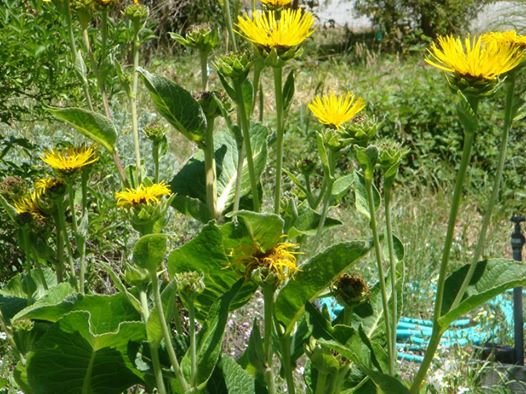 Elecampane root is specific for chronic mucus, coughs and digestion. Its aids the digestion and assimilation of food.
Elecampane root is specific for chronic mucus, coughs and digestion. Its aids the digestion and assimilation of food.
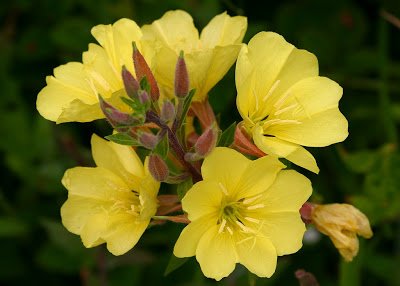 Evening Primrose is native to North America. The seeds are especially concentrated in GLA (gamma linolenic acid). GLA is an EFA (ESSENTIAL fatty acid). This type of fat benefits the pulmo-circulatory system, liver, skin, glands and joints. Consumption of the oil beautifies and adds a glow to skin. Used to treat eczema and psoriasis. Prevents symptoms associated with menopause and. Treats liver ailments such as cirrhosis. Has a positive effect on sex hormones estrogen and testosterone. Relieves pain and inflammation. The entire plant is edible; the leaves steamed at a potherb, the roots boiled like potatoes, the flowers in a salad. The bark and leaves are astringent and sedative, used to treat respiratory diseases such as COPD. Easy to grow and often considered a weed. An essential for everyone’s medicinal herb cabinet.
Evening Primrose is native to North America. The seeds are especially concentrated in GLA (gamma linolenic acid). GLA is an EFA (ESSENTIAL fatty acid). This type of fat benefits the pulmo-circulatory system, liver, skin, glands and joints. Consumption of the oil beautifies and adds a glow to skin. Used to treat eczema and psoriasis. Prevents symptoms associated with menopause and. Treats liver ailments such as cirrhosis. Has a positive effect on sex hormones estrogen and testosterone. Relieves pain and inflammation. The entire plant is edible; the leaves steamed at a potherb, the roots boiled like potatoes, the flowers in a salad. The bark and leaves are astringent and sedative, used to treat respiratory diseases such as COPD. Easy to grow and often considered a weed. An essential for everyone’s medicinal herb cabinet.
 Bronze Fennel –The eye herb. Heals the eyesight (some say gives second sight) Prevents the feeling of hunger. Bulbs are good raw in salads or braised as a vegetable. Seeds are chewed as breath freshener. I love to chew them. Rids the body of uncomfortable gases. Fennel seed tea used to bath sore eyes. Recommended for those who want to lose weight. Used in lotions and skin fresheners, it is said
Bronze Fennel –The eye herb. Heals the eyesight (some say gives second sight) Prevents the feeling of hunger. Bulbs are good raw in salads or braised as a vegetable. Seeds are chewed as breath freshener. I love to chew them. Rids the body of uncomfortable gases. Fennel seed tea used to bath sore eyes. Recommended for those who want to lose weight. Used in lotions and skin fresheners, it is said
to smooth lines away. Bunches of fennel were used to drive off witches. It was used in love potions and as an appetite suppressant.
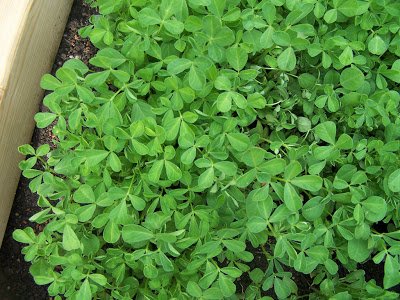 Fenugreek – Fenugreek seeds help treat diabetes, lower blood sugar and lower bad cholesterol. Fenugreek also helps maintain good metabolism, prevents constipation, purifies the blood and helps flush out harmful toxins. Fenugreek seeds and leaves are good for increasing breast milk in lactating women.
Fenugreek – Fenugreek seeds help treat diabetes, lower blood sugar and lower bad cholesterol. Fenugreek also helps maintain good metabolism, prevents constipation, purifies the blood and helps flush out harmful toxins. Fenugreek seeds and leaves are good for increasing breast milk in lactating women.
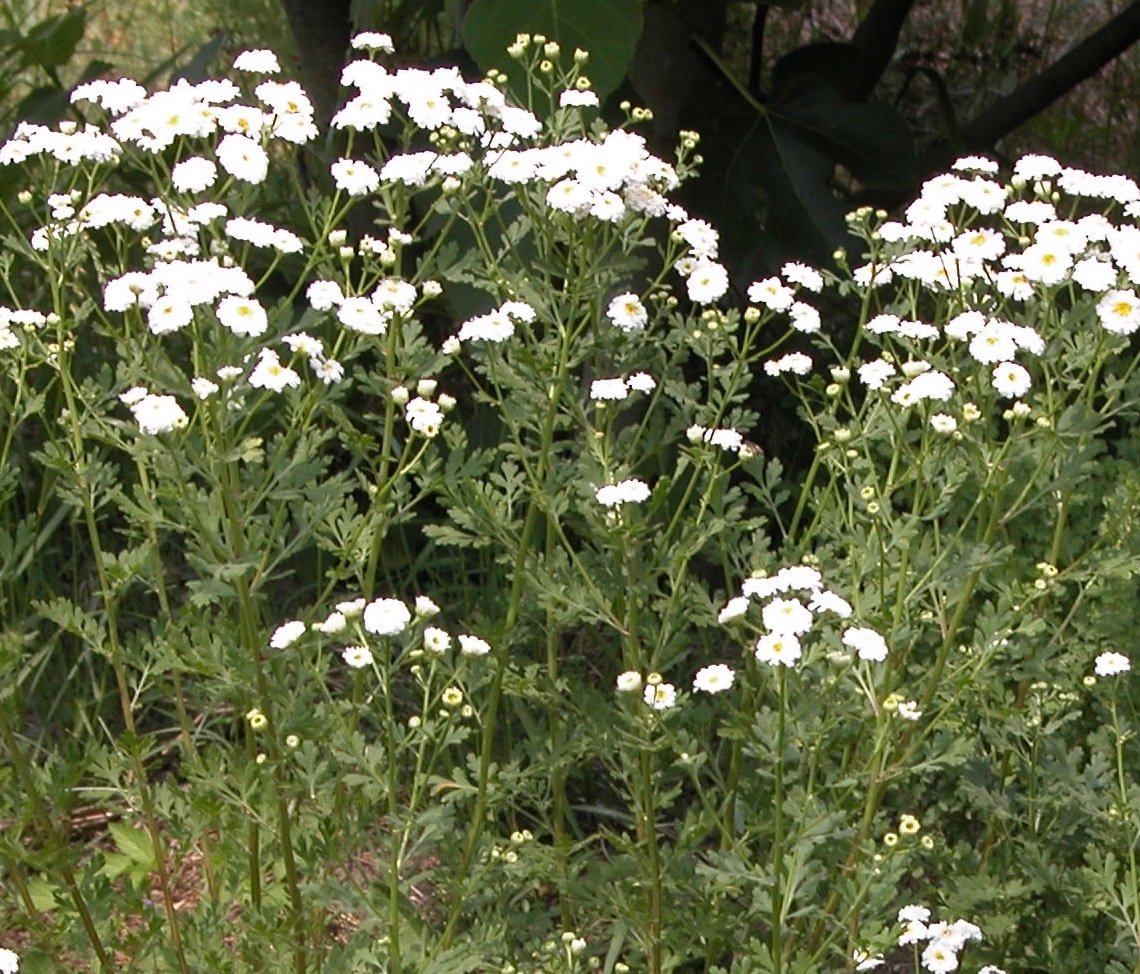 Feverfew–Used for pains in the head. Chewing a leaf relieves a migraine headache or vertigo. An infusion in the bath relieves aches and pains. Used as insect and moth repellant.
Feverfew–Used for pains in the head. Chewing a leaf relieves a migraine headache or vertigo. An infusion in the bath relieves aches and pains. Used as insect and moth repellant.
 Frankincense has been used in natural medicine with minimal side effects. The anti-inflammatory, anti-arthritic, anti-proliferative, anti-microbial and analgesic effect of this gum resin can reduce the inflammation and pain in the body and relieve the related symptoms of many diseases. The effect of frankincense is remarkable in increasing the number of dendritic segments and branching in the neuron cells of hippocampus, causing more synaptic connections in that area and therefore improvement of learning and memory.
Frankincense has been used in natural medicine with minimal side effects. The anti-inflammatory, anti-arthritic, anti-proliferative, anti-microbial and analgesic effect of this gum resin can reduce the inflammation and pain in the body and relieve the related symptoms of many diseases. The effect of frankincense is remarkable in increasing the number of dendritic segments and branching in the neuron cells of hippocampus, causing more synaptic connections in that area and therefore improvement of learning and memory.
Frankincense is a French word, meaning “pure incense”. Extensive studies on frankincense and its effect on neurophysiology could be a right approach in finding a possible new complementary or alternative natural medicine to control, cure or prevent some variety of neurodegenerative diseases such as Parkinson’s and Alzheimer’s. It has been used as an incense and fumigating preparation for religious rituals, in cultural ceremonies and as a traditional remedy for treating various diseases especially chronic inflammatory disease.
The resin is obtained by making scrapes in the trunk of the various Boswellia species and later collecting the dried resin gums or tears from the trees. Today the most traded frankincense is produced in Oman, Yemen and Somalia. In Traditional Chinese Medicine is commonly used as a remedy for improving blood circulation and as relieving pain.
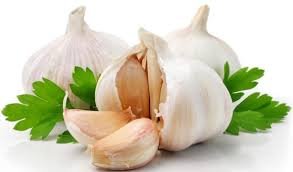 Garlic– A general tonic rich in sulfur. Contains vitamin A, B, C, as well as copper, manganese, iron, and calcium making it valuable as a tonic for the cells and glands. It is a valuable strengthening medicine that gives protection against disease, preventing infection and the formation of harmful bacteria in the stomach and intestines. This herb has powerful antiseptic qualities, cures constipation, and is used as a disinfectant. A strong garlic tea can be used as an insecticide. Aid in clearing skin blemishes. Taken to ward off colds and ease chest congestion. Sinus problems and hay fever are helped by eating garlic regularly. Helps to lower blood pressure, alleviate rheumatism, and expels worms. Garlic is a powerful cancer fight. It helps lower cholesterol, reduces plaque, lowers blood pressure, and lowers the risk of atherosclerosis (hardening of the arteries). Garlic is also effective against digestive ailments and diarrhea. Capsules are recommended when traveling overseas to help avoid infection. It was thought to give strength and courage. Aristotle noted garlic’s use as a guard against the fear of water. It’s also been widely used against evil powers and unwanted pests in the garden!
Garlic– A general tonic rich in sulfur. Contains vitamin A, B, C, as well as copper, manganese, iron, and calcium making it valuable as a tonic for the cells and glands. It is a valuable strengthening medicine that gives protection against disease, preventing infection and the formation of harmful bacteria in the stomach and intestines. This herb has powerful antiseptic qualities, cures constipation, and is used as a disinfectant. A strong garlic tea can be used as an insecticide. Aid in clearing skin blemishes. Taken to ward off colds and ease chest congestion. Sinus problems and hay fever are helped by eating garlic regularly. Helps to lower blood pressure, alleviate rheumatism, and expels worms. Garlic is a powerful cancer fight. It helps lower cholesterol, reduces plaque, lowers blood pressure, and lowers the risk of atherosclerosis (hardening of the arteries). Garlic is also effective against digestive ailments and diarrhea. Capsules are recommended when traveling overseas to help avoid infection. It was thought to give strength and courage. Aristotle noted garlic’s use as a guard against the fear of water. It’s also been widely used against evil powers and unwanted pests in the garden!
 Ginger is a wonderful digestive aid which stimulates saliva flow and digestive activity, settles the stomach, relieves vomiting, and eases pain from gas and diarrhea. Ginger is also effective as an anti-nausea remedy. Researchers have found that ginger is more effective against motion sickness than the most commonly used over the counter medication. Ginger is also used as a pain reliever and it helps lower bad cholesterol.
Ginger is a wonderful digestive aid which stimulates saliva flow and digestive activity, settles the stomach, relieves vomiting, and eases pain from gas and diarrhea. Ginger is also effective as an anti-nausea remedy. Researchers have found that ginger is more effective against motion sickness than the most commonly used over the counter medication. Ginger is also used as a pain reliever and it helps lower bad cholesterol.
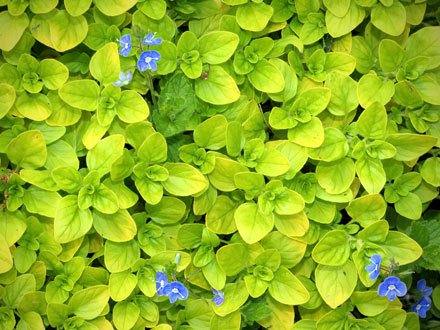 Golden Marjoram
Golden Marjoram
Golden seal – One of the most wonderful remedies in the entire herb kingdom. Remedy for all stomach disorders and acute inflammations. For sores, inflammations, ringworm and other skin diseases it excels. Taken in small frequent doses it will allay nausea during pregnancy. It is a very good tonic for spinal nerves and is very good in spinal meningitis. Will help cure pyorrhea or sore gums. Excellent for the eyes.
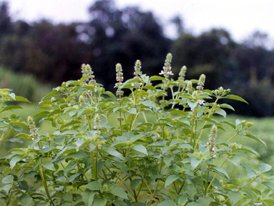 Holy Basil – from India is known to alleviate the symptoms of diabetes. Removes flouride from water.
Holy Basil – from India is known to alleviate the symptoms of diabetes. Removes flouride from water.
Holy Basil or Tulsi is used frequently in Ayurvedic medicine against colds and fevers. Boil a handful of fresh leaves, and add green tea to make a drink that will ward off chills and sniffles. It is a mild anesthetic, and great for minor aches, especially in the mouth and throat. Chew the leaves into a paste, and put against an aching gum, or a mouth ulcer, for immediate relief. Clove oil works too, tulsi has a slightly clovey flavor. Make a strong tulsi tea and gargle with it to relieve a sore throat.
It has excellent expectorant properties and loosens mucous and helps you cough it up. Add honey and ginger for a homemade cough syrup. It is very good at reducing cholesterol. Tulsi is a great stress reliever. Twelve leaves chewed each day, or brewed into a tea, can have a very calming effect, and help reduce blood pressure.
The Tulsi plant (Holy Basil) has been found to remove fluoride from water. After soaking the leaves in the water for a 8 hours, fluoride was reduced to just 1.1 parts per million. The World Health Organization says that ‘safe’ levels of fluoride in water are no higher than 1 part per million.
With the recent admittance by Harvard University that fluoride was bad for health, and the continuing news that points to fluoride being responsible for depleting brain capacity to causing ADD and ADHD, or even calcifying the pineal gland, (which inhibits important hormonal secretions like Melatonin and Seratonin, and DMT), it is wonderful news that such a simple remedy has been found.
Horseradish – A stimulant, purgative, and strong diuretic. It is used fresh grated or dry as a powder. Expels worms and is a stimulant to the circulatory system. Helps build up resistance to colds and reduces bronchial complaints. Relieves sinus pain and helps reduce blood pressure. Plant in potato patch to keep away potato bogs.
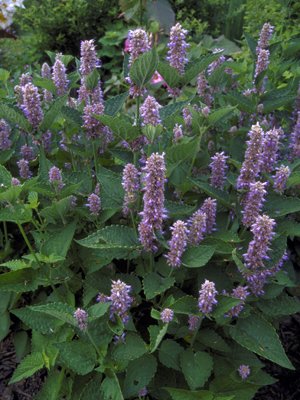 Hyssop- is known for its anise-like aroma and contains expectorant properties that eliminate congestion of the lungs caused by sinusitis and other viral infections. Hyssop has antioxidant, anti-inflammatory and diaphoretic properties that are known to help reduce fever and get rid of toxins in the body. Hyssop syrup relieves stubborn coughs and other pulmonary infections. Hyssop can treat lung problems including cough, cold, and asthma, as well as fever, stomach problems, bruises, inflammation, and high blood pressure.
Hyssop- is known for its anise-like aroma and contains expectorant properties that eliminate congestion of the lungs caused by sinusitis and other viral infections. Hyssop has antioxidant, anti-inflammatory and diaphoretic properties that are known to help reduce fever and get rid of toxins in the body. Hyssop syrup relieves stubborn coughs and other pulmonary infections. Hyssop can treat lung problems including cough, cold, and asthma, as well as fever, stomach problems, bruises, inflammation, and high blood pressure.
 Kelp – This is an algae. It is great in salads and soups and helps lower blood pressure. I like pure spirulina, Hawain blue-green algae.
Kelp – This is an algae. It is great in salads and soups and helps lower blood pressure. I like pure spirulina, Hawain blue-green algae.
Kelp is a sea vegetable that grows in almost every ocean. It contains high amounts of iodine, which helps to improve thyroid function by regulating thyroid hormones. It maintains the health of our metabolism and immune system and guards us against radiation poisoning. It has anti-inflammatory properties. Kelp contains fucoidan, a potent anti-inflammatory. It is a good source of iron, an essential mineral that is responsible for supplying our blood cells with oxygen. Many people across America suffer from a deficiency in iron, which can lead to chronic fatigue, skin ailments, brittle fingernails, and more. Like blueberries and several other super foods, kelp contains antioxidants, which are substances that can protect our bodies’ cells from free radicals and other potentially hazardous elements.
 Lavender Cotton – (santolina) Used with rue and rosemary to repel household insects and moths
Lavender Cotton – (santolina) Used with rue and rosemary to repel household insects and moths
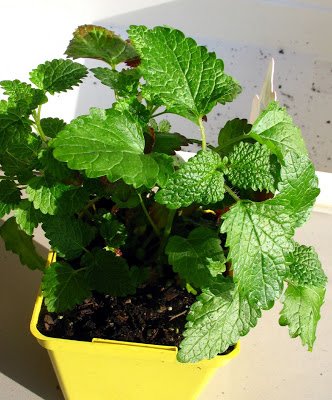 Lemon Balm–Lemon balm ensures that bees will never leave your garden! It is an herbaceous bushy perennial said to drive away all melancholy and sadness. The tea has a soothing effect, calms the nerves, relieves tiredness and helps relieve headaches. Used in laundry water to freshen clothing. Known to be a guard against senility and together with sage contributes to longevity. Rids failing memory, neuralgia, and helps bring down high fevers. Lessens the effects of exhaustion in hot weather and is a valuable remedy for nausea and vomiting.Native to southern Europe but now naturalized throughout much of the temperate world. The flowers strongly attract bees, hence its genus name Melissa, which means “bee” in Greek. Beekeepers often grow lemon balm near their hives to ensure that the bees stay close. Its lemony flavor and mosquito-repellant effects are due in large part to the presence of citral and citronellal, volatile oils that are also found in the citronella plant. Popular for soothing nerves, easing digestive disturbances, and promoting a restful sleep. Compounds in the herb have been shown to have a sedative effect, as well as significant antispasmodic activity. Eases symptoms of restlessness, excitability, and anxiety. The herb is a wonderful carminative and is often woven into formulations for those whose emotions often affect their gut. Scientists have identified several compounds in lemon balm that are able to block the herpes simplex I virus.
Lemon Balm–Lemon balm ensures that bees will never leave your garden! It is an herbaceous bushy perennial said to drive away all melancholy and sadness. The tea has a soothing effect, calms the nerves, relieves tiredness and helps relieve headaches. Used in laundry water to freshen clothing. Known to be a guard against senility and together with sage contributes to longevity. Rids failing memory, neuralgia, and helps bring down high fevers. Lessens the effects of exhaustion in hot weather and is a valuable remedy for nausea and vomiting.Native to southern Europe but now naturalized throughout much of the temperate world. The flowers strongly attract bees, hence its genus name Melissa, which means “bee” in Greek. Beekeepers often grow lemon balm near their hives to ensure that the bees stay close. Its lemony flavor and mosquito-repellant effects are due in large part to the presence of citral and citronellal, volatile oils that are also found in the citronella plant. Popular for soothing nerves, easing digestive disturbances, and promoting a restful sleep. Compounds in the herb have been shown to have a sedative effect, as well as significant antispasmodic activity. Eases symptoms of restlessness, excitability, and anxiety. The herb is a wonderful carminative and is often woven into formulations for those whose emotions often affect their gut. Scientists have identified several compounds in lemon balm that are able to block the herpes simplex I virus.
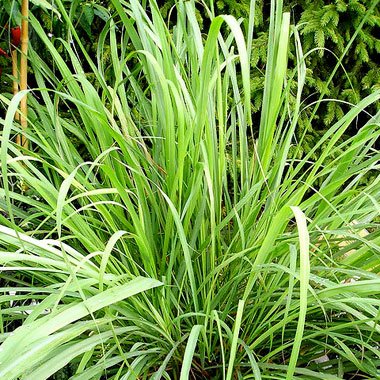 Lemon Grass – The tea has a tonic effect on the kidneys and is beneficial during a fever. Contains vitamin A, and has a wonderful effect on the skin helping to clear the complexion and give it a fine texture and warm glow. It is said that it gives the eyes a bright clear look. If a few drops of oil are added to the bath water the pores of the skin open and absorb the essential elements of the oil. As you see in the picture, I like to wrap it up for tea. Known to combat depression and is a powerful anti-fungal agent.
Lemon Grass – The tea has a tonic effect on the kidneys and is beneficial during a fever. Contains vitamin A, and has a wonderful effect on the skin helping to clear the complexion and give it a fine texture and warm glow. It is said that it gives the eyes a bright clear look. If a few drops of oil are added to the bath water the pores of the skin open and absorb the essential elements of the oil. As you see in the picture, I like to wrap it up for tea. Known to combat depression and is a powerful anti-fungal agent.
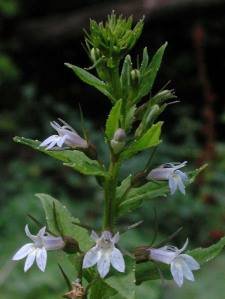 Lobelia –Lobelia acts differently upon different people. It is a powerful relaxant. Reduces palpitation of the heart. Good for reducing fevers. There is nothing that will clear the air passages of the lungs as lobelia. An antidote to poison. A general corrector of the whole system. Clears away obstructions in the circulation.
Lobelia –Lobelia acts differently upon different people. It is a powerful relaxant. Reduces palpitation of the heart. Good for reducing fevers. There is nothing that will clear the air passages of the lungs as lobelia. An antidote to poison. A general corrector of the whole system. Clears away obstructions in the circulation.
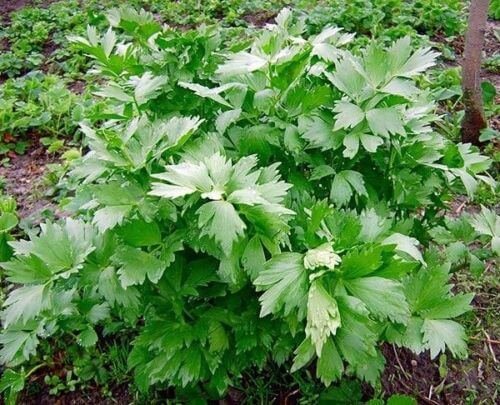 Lovage – Chewing on a piece of the dried root will keep you awake. Lovage warms a cold stomach and help digestion. Added to bathwater, it was believed to relieve skin problems.
Lovage – Chewing on a piece of the dried root will keep you awake. Lovage warms a cold stomach and help digestion. Added to bathwater, it was believed to relieve skin problems.
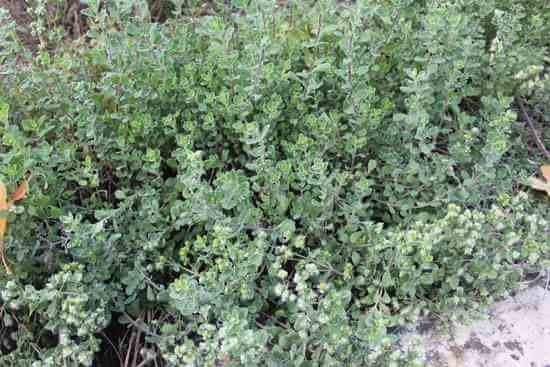 Marjoram The Greeks believed it could revive the spirits of anyone who inhaled it. At weddings wreaths and garlands were made of marjoram.
Marjoram The Greeks believed it could revive the spirits of anyone who inhaled it. At weddings wreaths and garlands were made of marjoram.
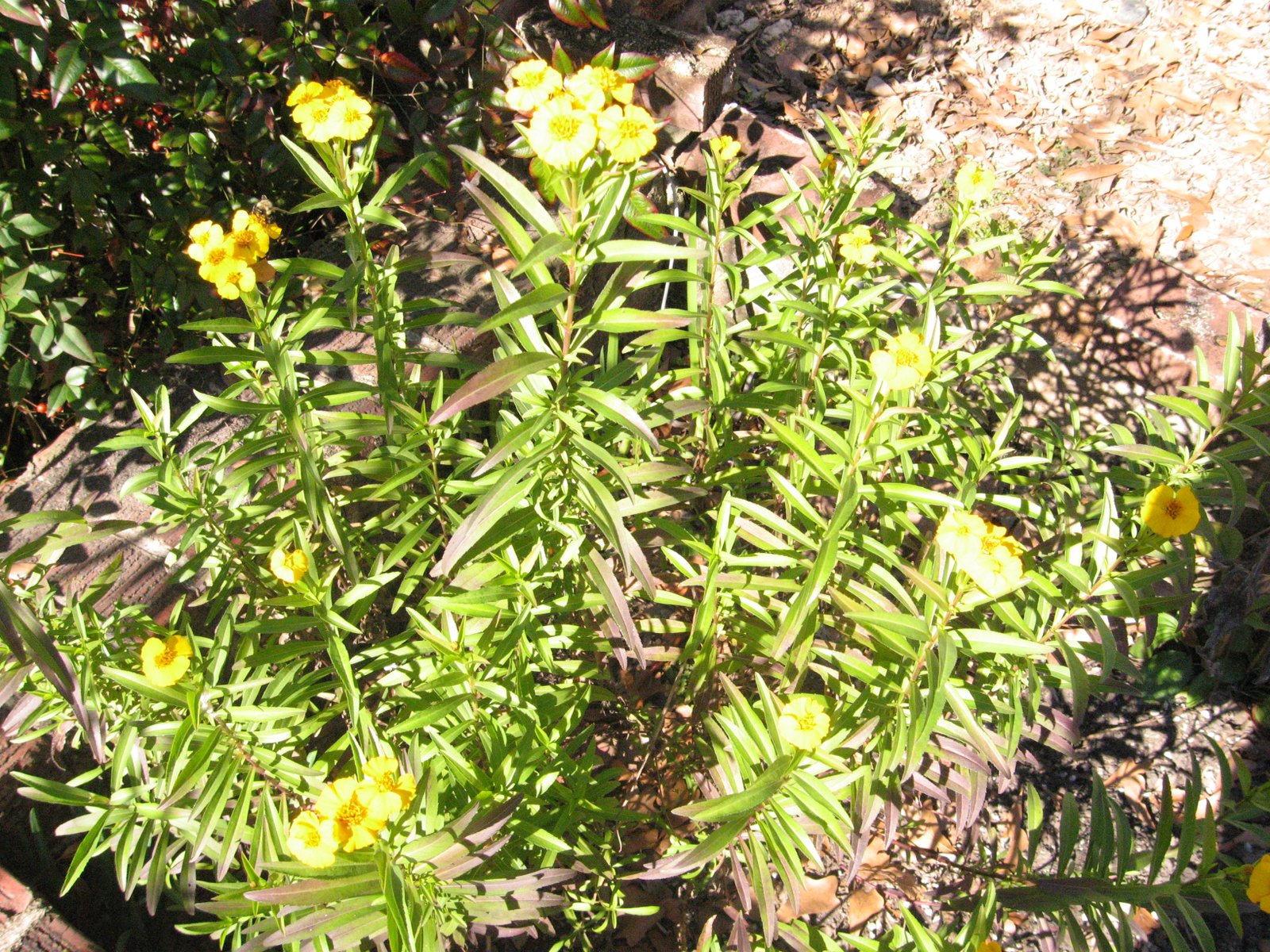 Mexican Tarragon is a culinary and medicinal herb that is rich in vitamins A, C, and B-complex and minerals such as zinc, copper, iron, and magnesium. It helps stimulate the appetite, relieves flatulence and colic, balances the body’s acidity, alleviates the pains of arthritis, rheumatism and gout, regulates menstruation, stops hiccups, prevents dyspepsia, and expes worms from the body. Tarragon contains poly-phenolic compounds that are known to help lower blood glucose levels. It is often used to help prevent strokes and heart attacks due to its ability to prevent clot formation inside narrow blood vessels in the heart and brain. It is known to help prevent or slow down the oxidative process that forms cataracts and other degenerative diseases. Tarragon tea is an excellent tonic after a heavy meal as it is a mild, natural diuretic that helps the system flush out toxins produced by the digestion of heavy, rich protein based meals. Drinking tarragon tea before bed can help to overcome insomnia and promote a restful and healing nights sleep. To make tea, use two teaspoons of fresh or dried herb to two cups of water and add lemon and honey if desired. Fresh tarragon leaves act as a local anesthetic and can be applied to aching gums or teeth, cuts, and/or sores to help numb and relieve pain. Tarragon is a wonderful addition to fresh salads, guacamole, soups, stews, steamed or roasted vegetables, rice, and potatoes.
Mexican Tarragon is a culinary and medicinal herb that is rich in vitamins A, C, and B-complex and minerals such as zinc, copper, iron, and magnesium. It helps stimulate the appetite, relieves flatulence and colic, balances the body’s acidity, alleviates the pains of arthritis, rheumatism and gout, regulates menstruation, stops hiccups, prevents dyspepsia, and expes worms from the body. Tarragon contains poly-phenolic compounds that are known to help lower blood glucose levels. It is often used to help prevent strokes and heart attacks due to its ability to prevent clot formation inside narrow blood vessels in the heart and brain. It is known to help prevent or slow down the oxidative process that forms cataracts and other degenerative diseases. Tarragon tea is an excellent tonic after a heavy meal as it is a mild, natural diuretic that helps the system flush out toxins produced by the digestion of heavy, rich protein based meals. Drinking tarragon tea before bed can help to overcome insomnia and promote a restful and healing nights sleep. To make tea, use two teaspoons of fresh or dried herb to two cups of water and add lemon and honey if desired. Fresh tarragon leaves act as a local anesthetic and can be applied to aching gums or teeth, cuts, and/or sores to help numb and relieve pain. Tarragon is a wonderful addition to fresh salads, guacamole, soups, stews, steamed or roasted vegetables, rice, and potatoes.
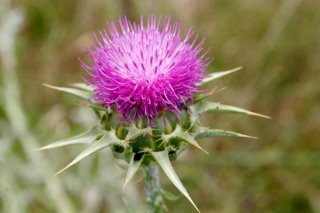 Milk Thistle detoxifies, protects, & rebuilds the liver from damage from ibuprofen, alcohol, radiation, heavy metals, processed food, and toxic build up. Milk thistle also lowers cholesterol, cortisol (stress), and has anti-cancer properties.
Milk Thistle detoxifies, protects, & rebuilds the liver from damage from ibuprofen, alcohol, radiation, heavy metals, processed food, and toxic build up. Milk thistle also lowers cholesterol, cortisol (stress), and has anti-cancer properties.
 Peppermint– A stimulant to the appetite and aids in nervous disorders. Used in salads, jellies, and drinks. Helps ward off colds.
Peppermint– A stimulant to the appetite and aids in nervous disorders. Used in salads, jellies, and drinks. Helps ward off colds.
Relieves indigestion by helping dispel stomach gases and cleansing the intestines. Helps to promote sound natural sleep, prevents bad breath, whitens teeth and conditions the gums. Excellent conditioner for oily hair. If added to the bath it has a stimulating effect. It was believed to cure hiccups and counteract sea-serpent stings. The Romans wore peppermint wreaths on their heads.
 Mugwort is an excellent nervine for uncontrollable shaking, nervousness and insomnia. It may be taken as a tea, using an ounce of the herb to a pint of water steeped 20 minutes. The dose is one tablespoon three times daily.
Mugwort is an excellent nervine for uncontrollable shaking, nervousness and insomnia. It may be taken as a tea, using an ounce of the herb to a pint of water steeped 20 minutes. The dose is one tablespoon three times daily.
Mugwort can also be smoked, filling the lungs three to six times. The tea or alcoholic tincture is used for treating liver and stomach disorders, and for this purpose it is diluted three times to help overcome the strong bitter taste. It may be taken hot to induce sweating. The tea was used by the Native Americans for colds and flu, bronchitis and fevers. Mugwort has strong emmenagogic properties and can be used to help induce menses. As such, it can be combined with other herbs such as crampbark for the treatment of menstrual cramps. It should be avoided during pregnancy.
Mullein – Is mildly sedative. Used in herbal tobacco blends as an expectorant. Flowers are used in a hair rinse to brighten blond hair. The root has been used for years in asthma by burning the root and inhaling the fumes. A tea of the leaves is very valuable in asthma, croup, bronchitis, lung infections, bleeding from the lungs, difficult breathing, and hay fever. A tea made from the flowers will induce sleep, relieve pain, and in large doses act as a laxative. The freshly crushed flowers will remove warts. Excellent pain killer without being habit forming. Helps calm the nerves. Mullein flower oil is made by macerating the flowers in olive oil. This is strained through a cloth and a few drops inserted in the ear with a wad of cotton at night for an earache.
 Oregano – Used to provoke menstruation, calm nerves, help morning sickness, sooth a toothache. Macerated in oil it is used for a rub for aching joints. The cosmic warmth it accumulates from the sun helps bad colds, cramps, and digestive disorders. The tea relieves nervous headache, induces sleep, stimulates excretion, and darkens the hair. Used for “sour humours” that plagued old farmers. Also used for scorpion and spider bites. – Oregano is a powerful natural antiseptic. It contains 19 chemical compounds with antibacterial actions as well as four compounds that soothe coughs. In addition, oregano helps soothe stomach muscles, making it a good digestive aid, and it helps lower blood pressure.
Oregano – Used to provoke menstruation, calm nerves, help morning sickness, sooth a toothache. Macerated in oil it is used for a rub for aching joints. The cosmic warmth it accumulates from the sun helps bad colds, cramps, and digestive disorders. The tea relieves nervous headache, induces sleep, stimulates excretion, and darkens the hair. Used for “sour humours” that plagued old farmers. Also used for scorpion and spider bites. – Oregano is a powerful natural antiseptic. It contains 19 chemical compounds with antibacterial actions as well as four compounds that soothe coughs. In addition, oregano helps soothe stomach muscles, making it a good digestive aid, and it helps lower blood pressure.
Oil of oregano is a well-known folk remedy used to kill bacteria, viruses, fungus and yeast. The oil derives much of its healing properties from carvacrol and thymol, two naturally occurring compounds found in it. Carvacrol is a powerful antimicrobial shown effective in fighting staphylococcus bacteria. Thymol is naturally antiseptic and the main ingredient in many mouthwashes. Oil of oregano contains calcium, magnesium, zinc, iron, potassium, copper, boron, manganese, vitamins A and C, and niacin. The most therapeutic benefits come from two plant varieties of wild oregano: thymus capitatus and origanum vulgare. You have several options when using oil of oregano therapeutically. It can be ingested and applied topically.
1. Clear sinuses – Unclog sinuses with a facial steam made using oil of oregano. Boil three to four cups of water in a pot. Remove the pot from heat after the water boils. Add several drops of oil of oregano to the water. Take the lid off the pot to let the steam rise. Place a towel around your head and over the pot and slowly inhale the steam. The oil of oregano will help kill any bacteria in the sinuses and lungs. You also add ½ cup of vinegar for another antibacterial boost, although it won’t smell so great. An oil of oregano facial steam may help with allergies, as oil of oregano is a natural antihistamine.
2. Reduce infections – Oil of oregano may be as good at reducing infections as traditional antibiotics, like streptomycin, penicillin and vacnomycin. Two studies have shown that oil of oregano may be as effective of a treatment against staphylococcus bacteria as common antibiotics.
3. Boost your immune system – Taking oil of oregano as either capsules or liquid–may help lessen symptoms of colds and get you feeling better faster. The natural antiviral and antibacterial properties in oil of oregano can relieve a sore throat. Gargle a mixture of 5-6 drops oil of oregano with a glass of water the moment you feel a sore throat coming on.
4. Get rid of fungus – Oil of oregano is a powerful antifungal herb that can be used to treat fungus conditions like athletes foot and yeast infections. It was more effective than other natural supplements in cases of yeast infections resistant to the conventional drug fluconazole (Diflucan), according to research published in the Canadian Journal of Microbiology.
5. Antioxidant powers – Oregano is loaded with antioxidants. A study by the U.S. Department of Agriculture found that oregano has more than 42 times the antioxidant activity than apples and 12 times more than oranges. You can take oregano oil in pill or liquid form for a boost of antioxidants.
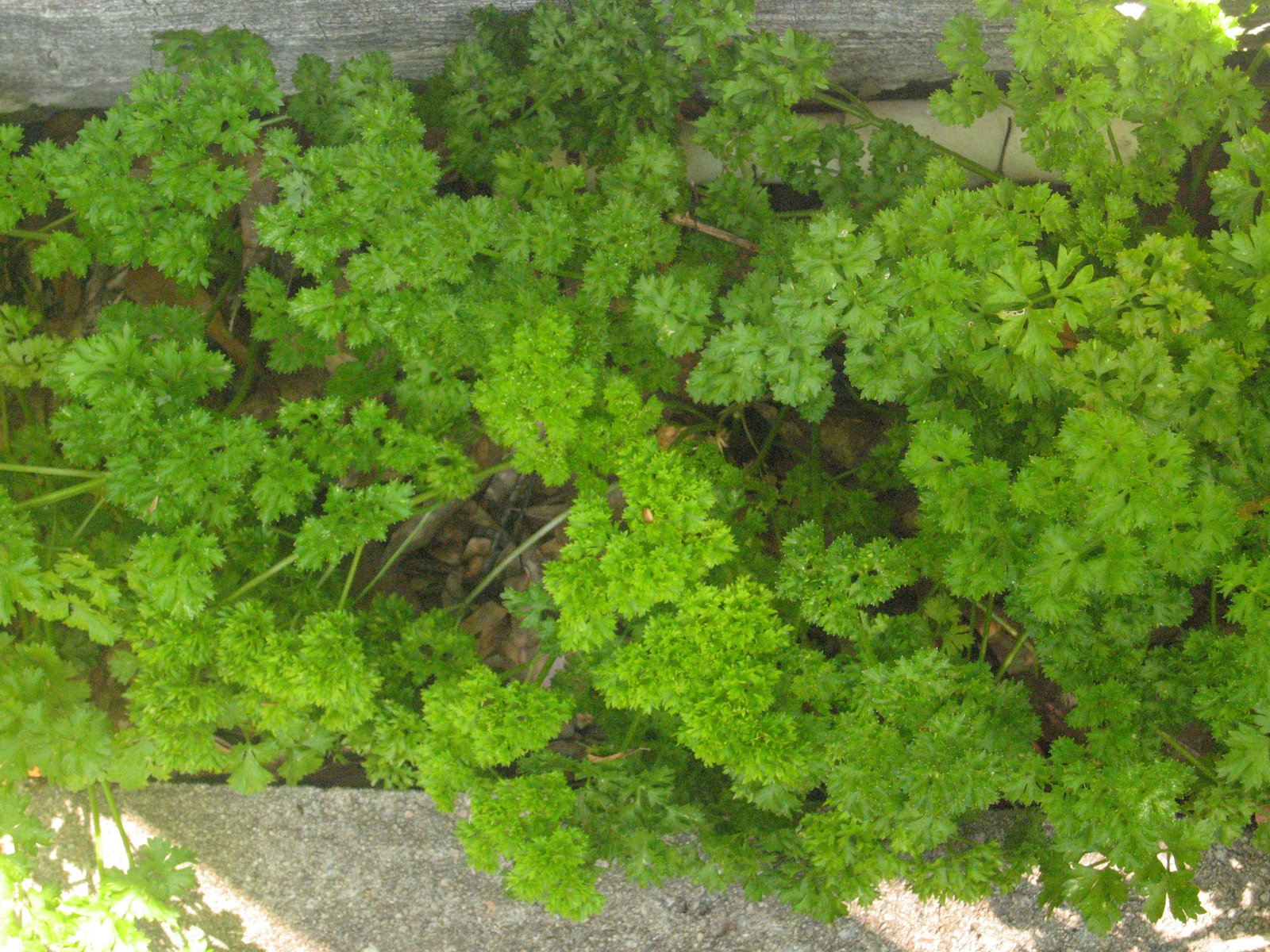 Parsley – The universal herb that is rich in A, B, C, iron, calcium, and other minerals. A good tonic. Prevents thread veins in complexion and the removal of freckles. It promotes the flow of urine, is a good tonic for anemia and helps kidney complaints. Used as a breath sweetener and skin cleanser. Parsley tea assists in circulation and digestion. It also closes large pores, makes dark hair shiny, and reduces puffiness around the eyes. Used for wreaths and in funeral ceremonies. Believed to repel head lice and attract rabbits.
Parsley – The universal herb that is rich in A, B, C, iron, calcium, and other minerals. A good tonic. Prevents thread veins in complexion and the removal of freckles. It promotes the flow of urine, is a good tonic for anemia and helps kidney complaints. Used as a breath sweetener and skin cleanser. Parsley tea assists in circulation and digestion. It also closes large pores, makes dark hair shiny, and reduces puffiness around the eyes. Used for wreaths and in funeral ceremonies. Believed to repel head lice and attract rabbits.
Parsley Tea contains immune-enhancing vitamins (C and A) and is a powerful antioxidant. Vitamin C, not only nourishes skin, it reduces scars and blemishes and stimulates the production of collagen, which is the key to cell reproduction and repair. Flat leaf (Italian) parsley is more fragrant and less bitter than the curly leafed kind. Drink this tea for a month and you may find your face was spotless. Soak parsley in water with a splash of vinegar. Wrap in a towel and store in the fridge. Bring a small saucepan of filtered water to a boil. Put ¼ cup of parsley in a cup or teapot. Pour the boiling water on top, let steep for 5-6 minutes. Add a splash of fresh lemon.
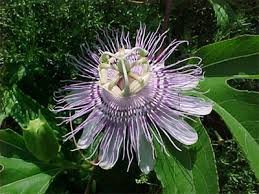 Passion Flower– This tropical flower is visually incredible with a unique set of purple petals and wiggling stigmas in the center. Historically, the passionflower was used as a sedative. It has been used for insomnia and also to treat Parkinson’s Disease. There has been experimentation with the flower to determine its potency as an anti-depressant. Preparations of the flower include liquid tinctures and dried as an herb that can be made into tea. Warning: Avoid if pregnant or nursing.
Passion Flower– This tropical flower is visually incredible with a unique set of purple petals and wiggling stigmas in the center. Historically, the passionflower was used as a sedative. It has been used for insomnia and also to treat Parkinson’s Disease. There has been experimentation with the flower to determine its potency as an anti-depressant. Preparations of the flower include liquid tinctures and dried as an herb that can be made into tea. Warning: Avoid if pregnant or nursing.
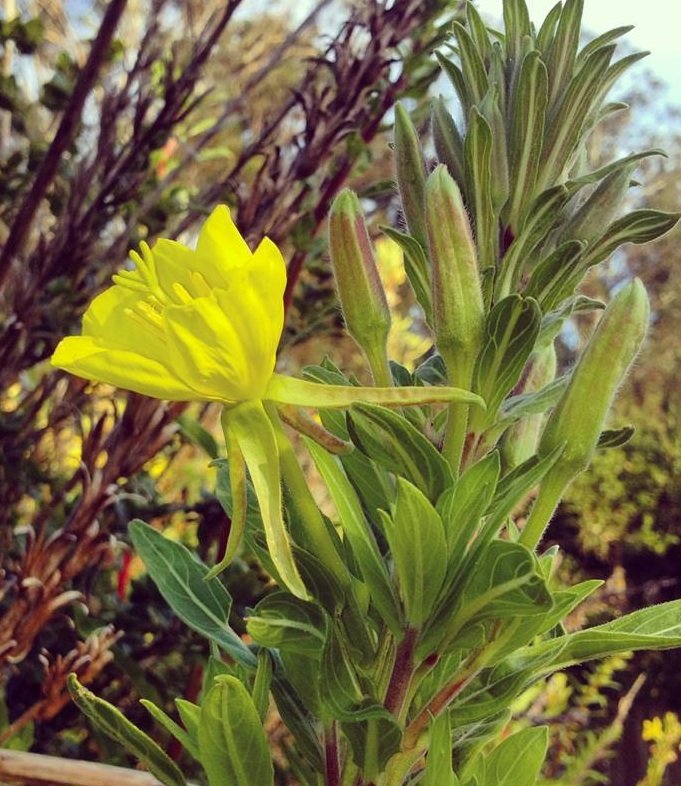 Primrose –The oil relieves menstrual symptoms and helps to lower cholesterol levels in the blood.
Primrose –The oil relieves menstrual symptoms and helps to lower cholesterol levels in the blood.
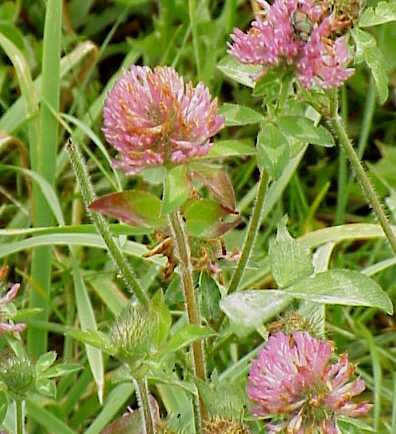 Red Clover – It is good for cancer of the stomach, bronchial troubles, whooping cough, and various spasms. Red clover is exceedingly good for cancer on any part of the body. If there are sores on any part of the body, bath them with a tea from the flowers.
Red Clover – It is good for cancer of the stomach, bronchial troubles, whooping cough, and various spasms. Red clover is exceedingly good for cancer on any part of the body. If there are sores on any part of the body, bath them with a tea from the flowers.
 Rosemary – Has more than 12 antioxidant compounds. Antispasmodic, antimicrobial and anti-depressive. Inhibits mammary gland, colon and lung cancer in animals. Known as a preserver of youth! Stimulates and strengthens the memory, therefore “rosemary for remembrance.” A nerve tonic. Rosemary is good for neuralgia as it soothes the nerves and gives headache relief. Known to strengthen the heart and the head. It deepens the color of dark hair, stimulates the roots and gives luster to the hair. Rosemary extract revitalizes the scalp prevents dandruff and encourages hair growth. The leaves boiled in white wine are used as a skin tonic to wash the face. Burned against infection. The oil is used for achy joints and rheumatism. In the bath it increases circulation An insect repellant. A few sprigs in the bath are invigorating! Rosemary in your hair will improve your memory. Some thought if you put a sprig under your pillow It would protect you from evil spirits
Rosemary – Has more than 12 antioxidant compounds. Antispasmodic, antimicrobial and anti-depressive. Inhibits mammary gland, colon and lung cancer in animals. Known as a preserver of youth! Stimulates and strengthens the memory, therefore “rosemary for remembrance.” A nerve tonic. Rosemary is good for neuralgia as it soothes the nerves and gives headache relief. Known to strengthen the heart and the head. It deepens the color of dark hair, stimulates the roots and gives luster to the hair. Rosemary extract revitalizes the scalp prevents dandruff and encourages hair growth. The leaves boiled in white wine are used as a skin tonic to wash the face. Burned against infection. The oil is used for achy joints and rheumatism. In the bath it increases circulation An insect repellant. A few sprigs in the bath are invigorating! Rosemary in your hair will improve your memory. Some thought if you put a sprig under your pillow It would protect you from evil spirits
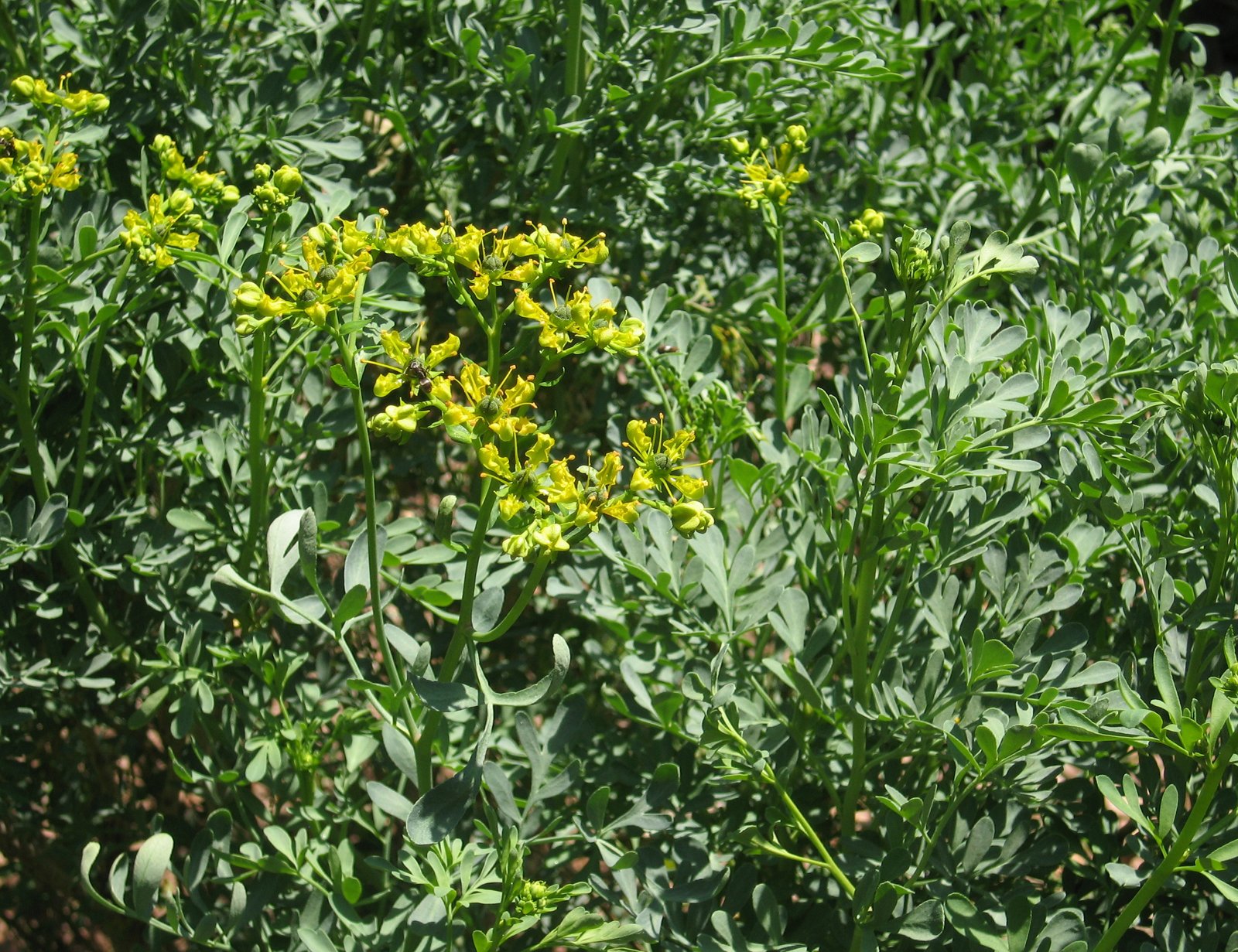 Rue – A powerful flea repellent. It is used to treat skin disorders and strengthen blood vessels, and as an eye bath. It is an air cleanser when burnt. Traditionally used to cure epilepsy and insanity. And in ointments it relieves the pain of sciatica, rheumatism and gout.
Rue – A powerful flea repellent. It is used to treat skin disorders and strengthen blood vessels, and as an eye bath. It is an air cleanser when burnt. Traditionally used to cure epilepsy and insanity. And in ointments it relieves the pain of sciatica, rheumatism and gout.
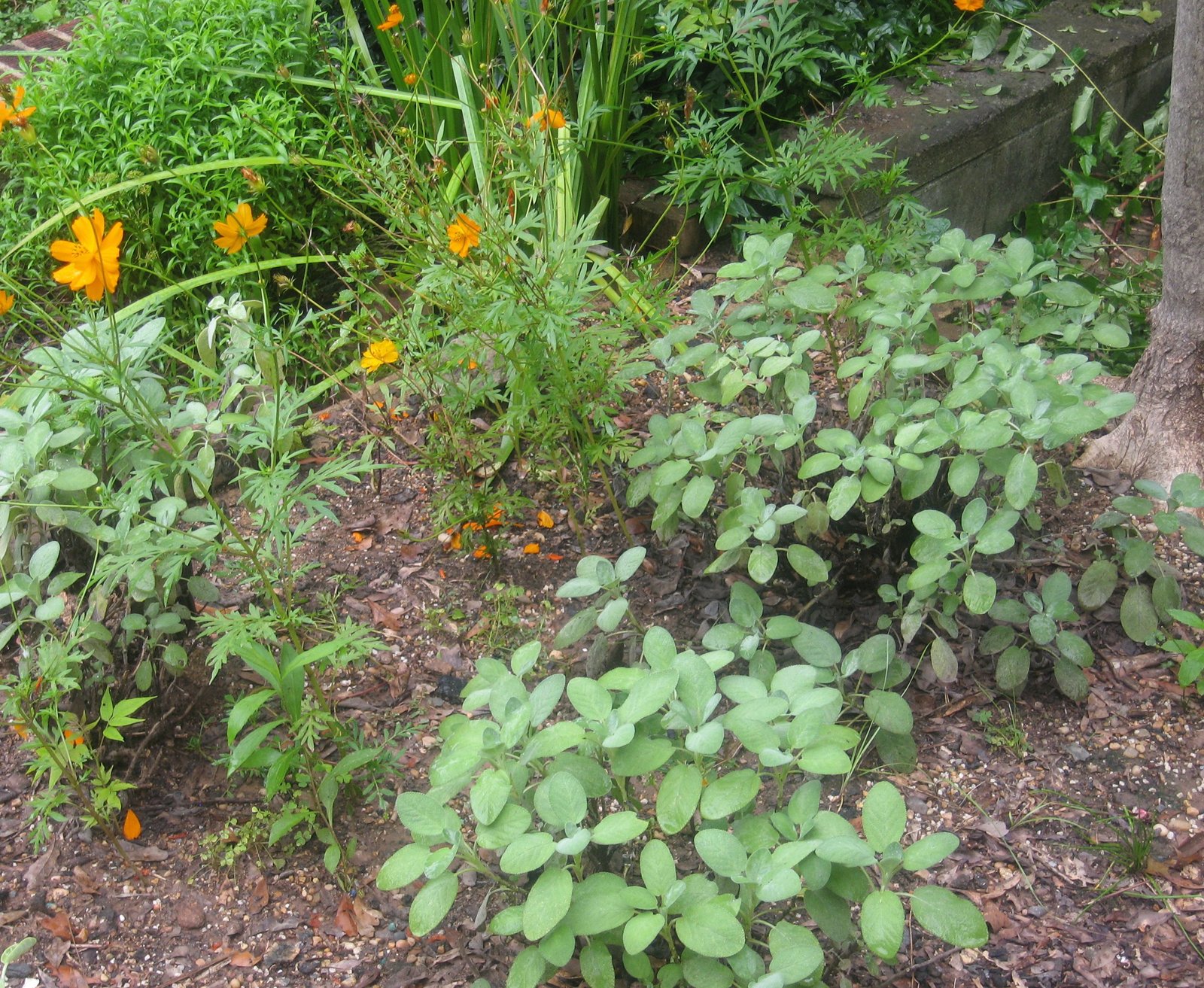 Sage – It could almost be called a “cure-all”. Was used as a fertility drug by the Egyptians. Is associated with longevity. Sage makes a soothing, calming drink. Drinking sage tea cold during the day will prevent night sweats and is a good astringent tonic. It will also cause the flow of milk in the breast to cease. Used to treat hemoroids, insomnia, estrogen loss, nervous exhaustion, herpes and alzheimers disease. It cools fevers and cleanses the blood, whitens teeth and strengthens gums and makes a great mouthwash and deodorant. It increases hair growth and darkens gray hair. It is believed to restore energy and bad memory and has a tonic effect on the liver. The tea is taken as a nerve tonic. The leaves are used in tobacco. It is used as a hair tonic to prevent hair from going gray. Wounds will heal more rapidly if washed with sage. I love this tea! Thought to promote strength and longevity and believed to cure warts. American Indians used it as a toothbrush.
Sage – It could almost be called a “cure-all”. Was used as a fertility drug by the Egyptians. Is associated with longevity. Sage makes a soothing, calming drink. Drinking sage tea cold during the day will prevent night sweats and is a good astringent tonic. It will also cause the flow of milk in the breast to cease. Used to treat hemoroids, insomnia, estrogen loss, nervous exhaustion, herpes and alzheimers disease. It cools fevers and cleanses the blood, whitens teeth and strengthens gums and makes a great mouthwash and deodorant. It increases hair growth and darkens gray hair. It is believed to restore energy and bad memory and has a tonic effect on the liver. The tea is taken as a nerve tonic. The leaves are used in tobacco. It is used as a hair tonic to prevent hair from going gray. Wounds will heal more rapidly if washed with sage. I love this tea! Thought to promote strength and longevity and believed to cure warts. American Indians used it as a toothbrush.
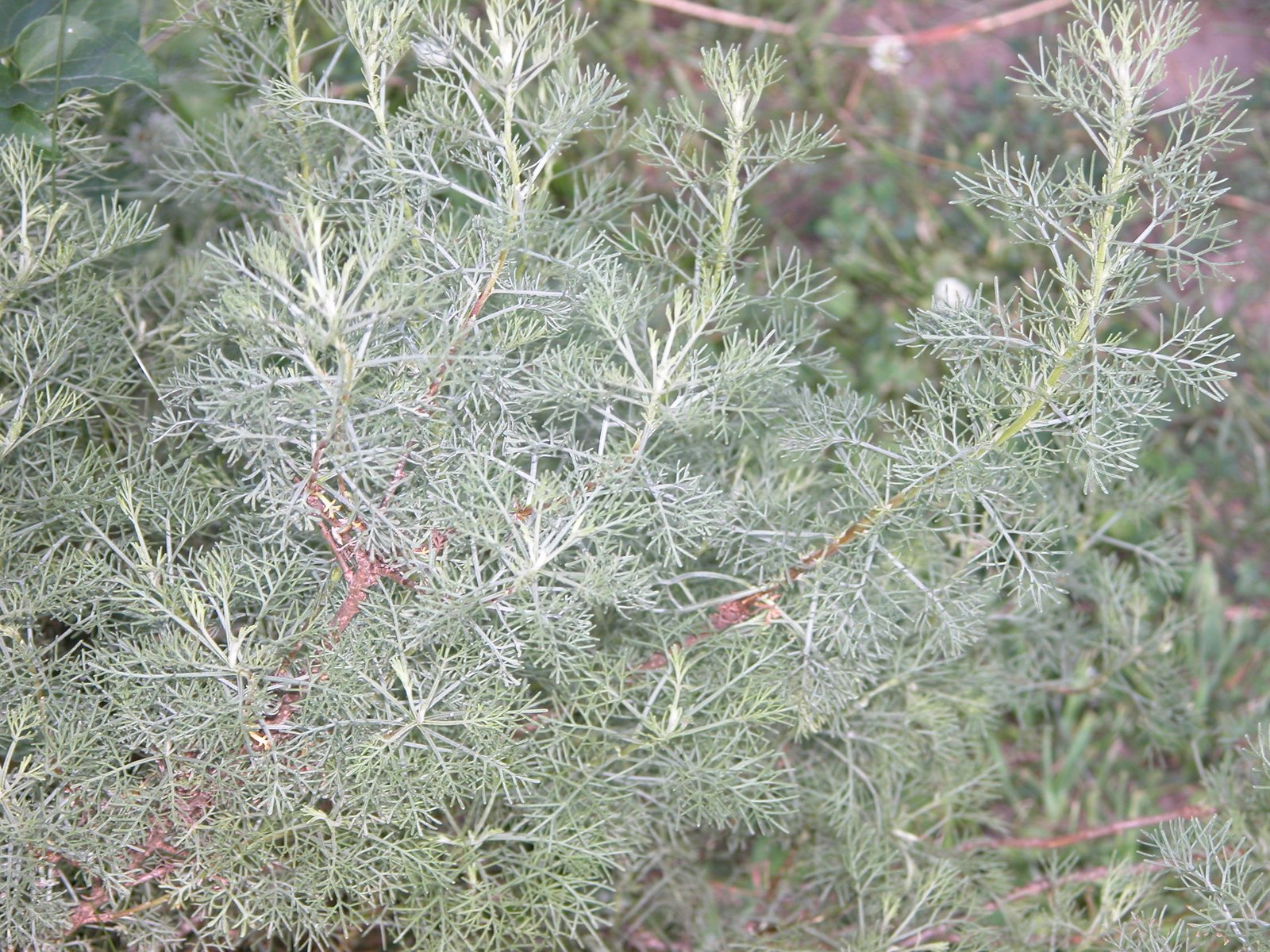 Southernwood encourages hair growth. The young tips are a tonic to promote menstruation. It expels worms, repels insects and moths and is a disinfectant. Wormwood was used as a disinfectant on hospital floors. The leaves are used in tobacco. Aids women’s problems, and digestion.
Southernwood encourages hair growth. The young tips are a tonic to promote menstruation. It expels worms, repels insects and moths and is a disinfectant. Wormwood was used as a disinfectant on hospital floors. The leaves are used in tobacco. Aids women’s problems, and digestion.
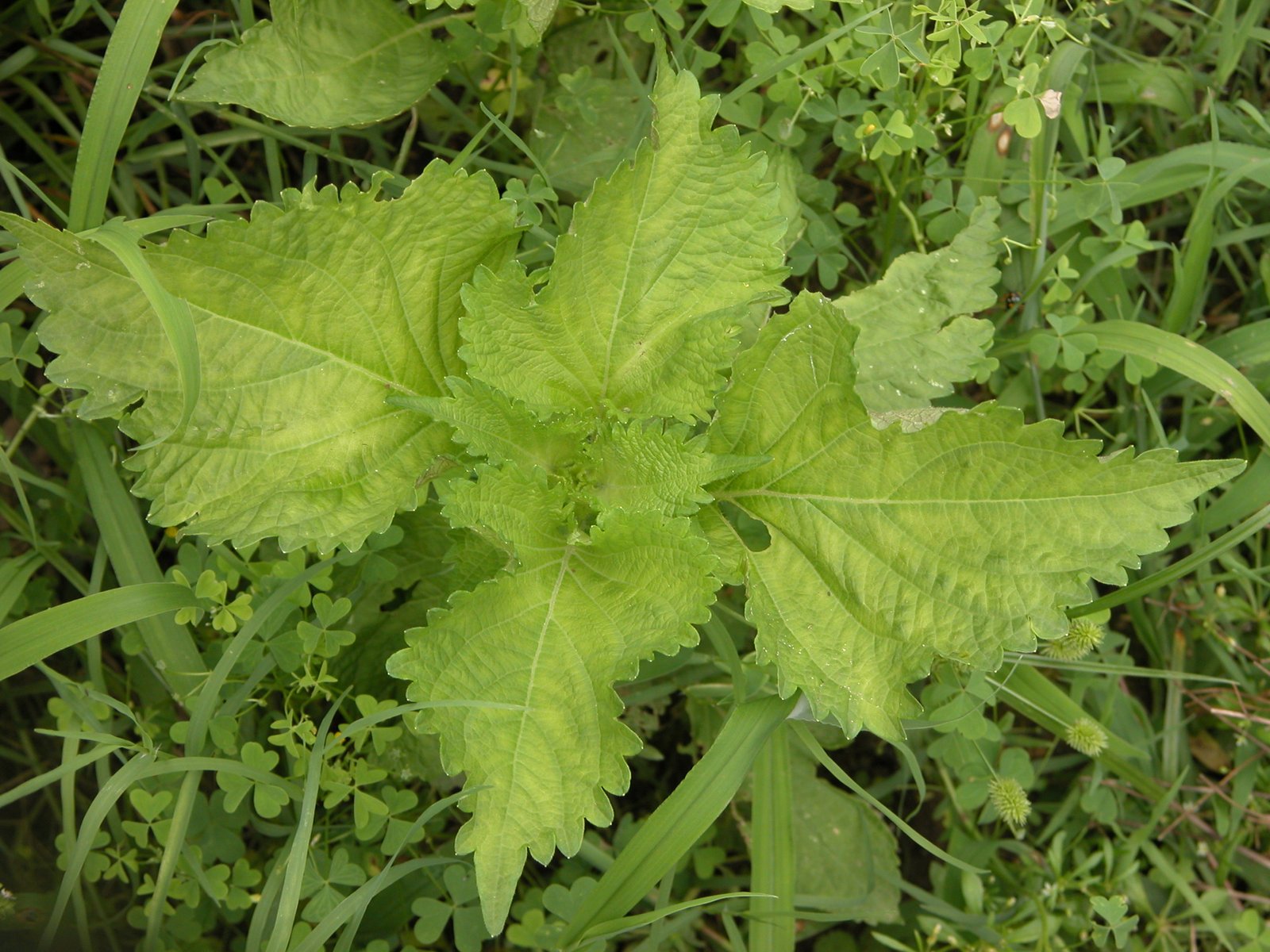 Shisho
Shisho
 Stevia has been used for hundreds of years to sweeten foods and treat burns and stomach discomfort. The plant gets its sweetness from naturally occurring glycosides, extracted by placing the plant in hot water. Packaged stevia isn’t necessarily “all natural.” In order for the sugar substitute to survive on the store shelf or pantry, many companies include additional ingredients. A packet of Truvia,a popular stevia brand, contains erythritol, a sugar alcohol, and “natural flavors”, along with the stevia leaf extract. Pyure, another stevia product, contains dextrose, a starch-derived glucose often extracted from corn, wheat or rice. Stevia is a lot sweeter than sugar. Even though it’s calorie-free, the plant extract can taste 200 times sweeter than the same amount of granulated table sugar. A little goes a long way. Stevia can replace sugar in baking. You can lighten up cookies, cakes and even cocktails with stevia. Since stevia is so much sweeter than sugar, recipes will require less of it, along with a bulking agent to make up for lost ingredient volume. The amount of stevia you use will depend on both the recipe and the brand. One and one-fourth teaspoons of Truvia can replace one tablespoon of sugar, while Stevia In The Raw makes a granulated product that does have an equal conversion rate. Stevia doesn’t caramelize or brown the way sugar. Stevia can be purchased in liquid and powdered concentrates. The sweetener comes in drops, a fine powder that is less grainy than table sugar and a granulated sugar-comparable form. Each varies in concentration of sweetness, so it’s important to read labels before using it in recipes.Stevia is a healing herb. It “kills” the need for nicotine and melts pounds! Stevia not only reduces high blood pressure and cures throat inflammation, it is a good ally in the fight against chronic fatigue. Stevia can help someone quit smoking and avoid alcohol. It blocks the craving signals your brain sends, and you will not crave a cigarette. A couple of drops of stevia will do the trick. Drop directly on tongue when craving strikes. It provides an instant effect, and cuts down the craving.
Stevia has been used for hundreds of years to sweeten foods and treat burns and stomach discomfort. The plant gets its sweetness from naturally occurring glycosides, extracted by placing the plant in hot water. Packaged stevia isn’t necessarily “all natural.” In order for the sugar substitute to survive on the store shelf or pantry, many companies include additional ingredients. A packet of Truvia,a popular stevia brand, contains erythritol, a sugar alcohol, and “natural flavors”, along with the stevia leaf extract. Pyure, another stevia product, contains dextrose, a starch-derived glucose often extracted from corn, wheat or rice. Stevia is a lot sweeter than sugar. Even though it’s calorie-free, the plant extract can taste 200 times sweeter than the same amount of granulated table sugar. A little goes a long way. Stevia can replace sugar in baking. You can lighten up cookies, cakes and even cocktails with stevia. Since stevia is so much sweeter than sugar, recipes will require less of it, along with a bulking agent to make up for lost ingredient volume. The amount of stevia you use will depend on both the recipe and the brand. One and one-fourth teaspoons of Truvia can replace one tablespoon of sugar, while Stevia In The Raw makes a granulated product that does have an equal conversion rate. Stevia doesn’t caramelize or brown the way sugar. Stevia can be purchased in liquid and powdered concentrates. The sweetener comes in drops, a fine powder that is less grainy than table sugar and a granulated sugar-comparable form. Each varies in concentration of sweetness, so it’s important to read labels before using it in recipes.Stevia is a healing herb. It “kills” the need for nicotine and melts pounds! Stevia not only reduces high blood pressure and cures throat inflammation, it is a good ally in the fight against chronic fatigue. Stevia can help someone quit smoking and avoid alcohol. It blocks the craving signals your brain sends, and you will not crave a cigarette. A couple of drops of stevia will do the trick. Drop directly on tongue when craving strikes. It provides an instant effect, and cuts down the craving.
Strawberry – Strawberry tea is an excellent remedy for diarrhea in children. Good for eczema used internally and as a wash externally. Will prevent night sweats.
 Summer Savory was believed to be an aphrodisiac. Some thought it was a cure for deafness.
Summer Savory was believed to be an aphrodisiac. Some thought it was a cure for deafness.
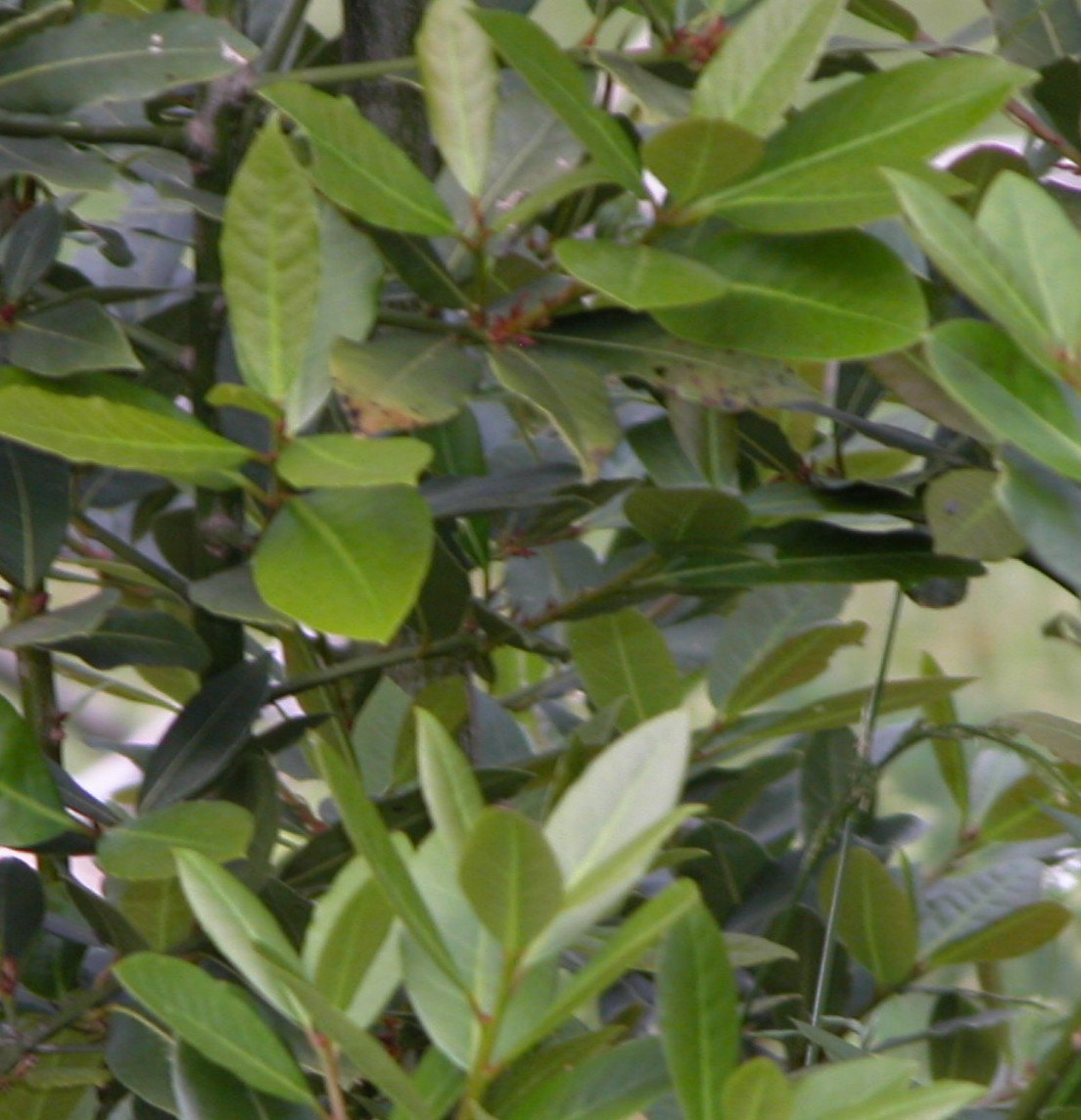 Sweet Bay – an evergreen shrubby tree that grows to 25 feet tall with leathery leaves that are very aromatic. It is a general household insecticide. The burning leaves are antiseptic. It is used for flavoring and tenderizing and essential in cooking for bouquet garni. The whole plant has narcotic qualities. Gives protection against infection. Is burned to cleanse the air. Leaves can be kept in grains or flour to discourage insects. The oil is used for earaches, rheumatism, hysteria and flatulence. Body rub: alternate layers of fresh bay leaves, sea salt, and vegetable oil and seal. Later strain and use as a toning body.
Sweet Bay – an evergreen shrubby tree that grows to 25 feet tall with leathery leaves that are very aromatic. It is a general household insecticide. The burning leaves are antiseptic. It is used for flavoring and tenderizing and essential in cooking for bouquet garni. The whole plant has narcotic qualities. Gives protection against infection. Is burned to cleanse the air. Leaves can be kept in grains or flour to discourage insects. The oil is used for earaches, rheumatism, hysteria and flatulence. Body rub: alternate layers of fresh bay leaves, sea salt, and vegetable oil and seal. Later strain and use as a toning body.
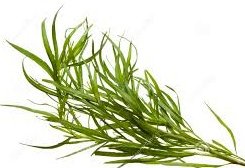 French Tarragon -Put in shoes before long walking trips to give strength. It has been used to relieve toothache and as an antifungal. Winter tarragon is a good substitute for French and worth growing. It is a sturdier plant with bright yellow flowers. A source of warm forces, a friend of the head, heart, and liver.
French Tarragon -Put in shoes before long walking trips to give strength. It has been used to relieve toothache and as an antifungal. Winter tarragon is a good substitute for French and worth growing. It is a sturdier plant with bright yellow flowers. A source of warm forces, a friend of the head, heart, and liver.
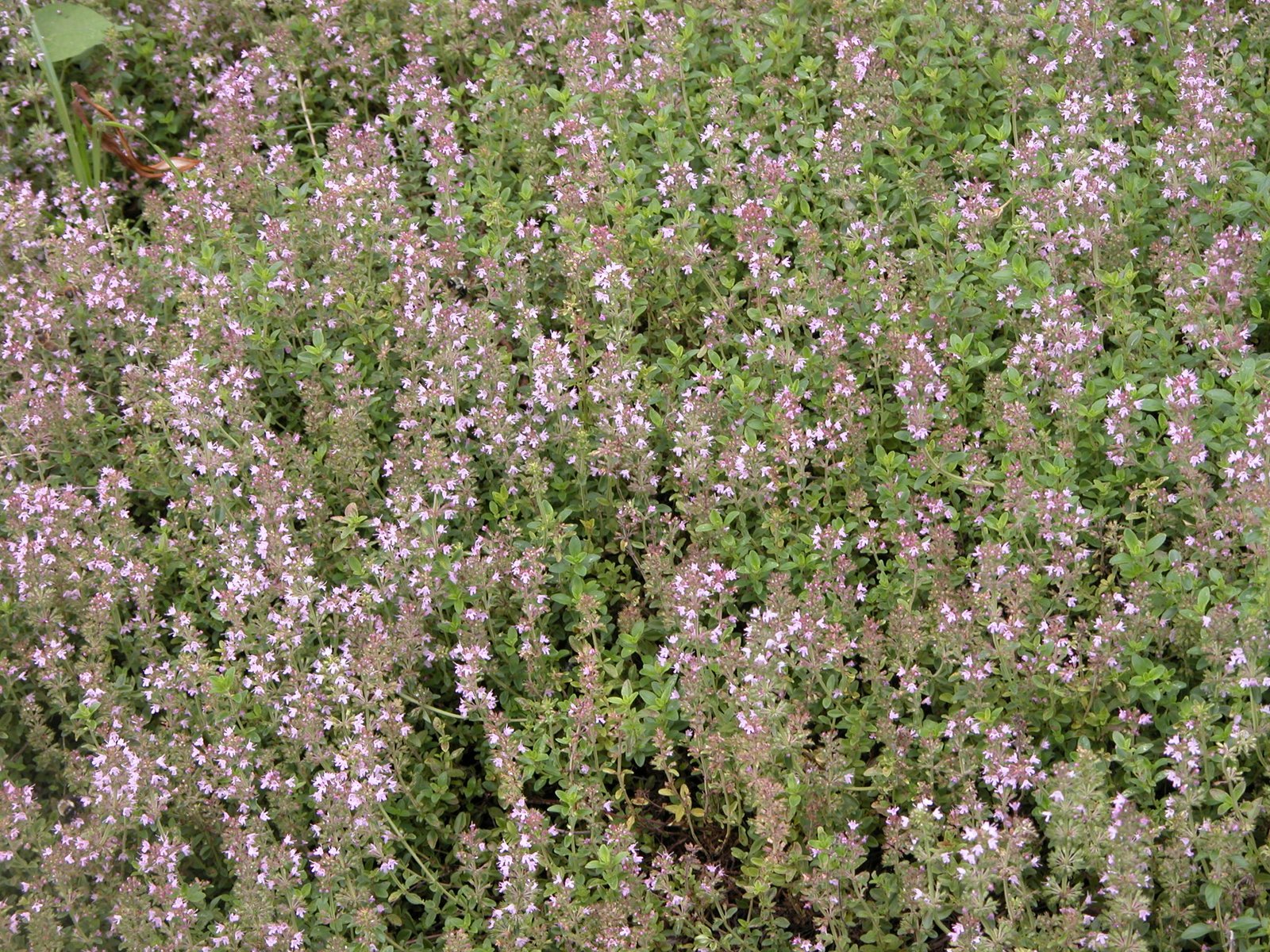 Thyme “Courage” When in doubt use thyme. A strengthening herb. Egyptians used oil of thyme to embalm the dead.It is an antiseptic, antibacterial, antispasmodic and anti-fungal and used to treat nervous conditions, epilepsy, and respiratory problems and flu. The tea was a folk cure for hangovers, remedy for nightmares, and good for anemia, exhaustion and skin problems. It is a valuable medicine for treating coughs, colds, cramps, colic, poor digestion and loss of appetite. Used with sage as a gargle for sore throat. Tones up the skin.Thyme oil is used in the bath for neuralgia, rheumatism and sprains. A pillow of thyme was used as a remedy for asthma. Acts as a mood elevator. Clears the brain and improves eyesight. Known to counter the effects of aging. Burned as an incense to cleanse the air.and used in a tea to treat worms. Burning thyme gets rid of insects in your house. A bed of thyme was thought to be a home for fairies.
Thyme “Courage” When in doubt use thyme. A strengthening herb. Egyptians used oil of thyme to embalm the dead.It is an antiseptic, antibacterial, antispasmodic and anti-fungal and used to treat nervous conditions, epilepsy, and respiratory problems and flu. The tea was a folk cure for hangovers, remedy for nightmares, and good for anemia, exhaustion and skin problems. It is a valuable medicine for treating coughs, colds, cramps, colic, poor digestion and loss of appetite. Used with sage as a gargle for sore throat. Tones up the skin.Thyme oil is used in the bath for neuralgia, rheumatism and sprains. A pillow of thyme was used as a remedy for asthma. Acts as a mood elevator. Clears the brain and improves eyesight. Known to counter the effects of aging. Burned as an incense to cleanse the air.and used in a tea to treat worms. Burning thyme gets rid of insects in your house. A bed of thyme was thought to be a home for fairies.
 Tumeric – The curcumin contained in turmeric provides powerful anti-cancer properties, especially for smokers and past smokers. Curcumin has clinically proven anti-inflammatory effects, including significant beneficial effects in relieving rheumatoid arthritis and carpal tunnel syndrome. Turmeric is packed with antioxidants, including vitamins A, C, and E, and may help prevent cataracts. It’s amazing anti-inflammatory, antioxidant, and anti-cancer benefits are no secret. The incredible healing powers of turmeric earned it the appropriate title of “king of all spices.” Turmeric is quickly becoming recognized as a fountain of youth “super spice” with near-miraculous potential in modern medicine. Scientific studies published in recent years have shown that taking turmeric on a regular basis can lengthen lifespan and improve overall quality of life. (http://www.lef.org) “Curcumin, the bioactive extract of turmeric, promises a great future in human clinical studies designed to prevent and/or delay age-related diseases,” explained the authors of a review on research involving turmeric. Data shows that it can help boost energy levels, cleanse the blood, heal digestive disorders, dissolve gallstones, treat infections, and prevent cancer; some health experts have been reluctant to recommend taking turmeric in medicinal doses until human clinical trials have been conducted. But unlike pharmaceutical drugs, taking turmeric is not dangerous, and civilizations have been consuming large amounts of it for centuries as part of their normal diets. The average Asian person consumes up to 1,000 milligrams of turmeric a day, or as much as 440 grams per year, which equates to roughly 90 milligrams of active curcuminoids per day at higher end of the concentration spectrum. Figures cover the amount of turmeric consumed as food in traditional dishes. Supplements with similar concentrations are perfectly safe and effective. But the truth of the matter is that you can safely take much higher doses of both turmeric and curcumin, and doing so will provide even more benefits. The Linus Pauling Institute at Oregon State University (OSU) has compiled a thorough list of turmeric’s benefits with detailed information about the doses used to achieve such benefits. You can access this list here:
Tumeric – The curcumin contained in turmeric provides powerful anti-cancer properties, especially for smokers and past smokers. Curcumin has clinically proven anti-inflammatory effects, including significant beneficial effects in relieving rheumatoid arthritis and carpal tunnel syndrome. Turmeric is packed with antioxidants, including vitamins A, C, and E, and may help prevent cataracts. It’s amazing anti-inflammatory, antioxidant, and anti-cancer benefits are no secret. The incredible healing powers of turmeric earned it the appropriate title of “king of all spices.” Turmeric is quickly becoming recognized as a fountain of youth “super spice” with near-miraculous potential in modern medicine. Scientific studies published in recent years have shown that taking turmeric on a regular basis can lengthen lifespan and improve overall quality of life. (http://www.lef.org) “Curcumin, the bioactive extract of turmeric, promises a great future in human clinical studies designed to prevent and/or delay age-related diseases,” explained the authors of a review on research involving turmeric. Data shows that it can help boost energy levels, cleanse the blood, heal digestive disorders, dissolve gallstones, treat infections, and prevent cancer; some health experts have been reluctant to recommend taking turmeric in medicinal doses until human clinical trials have been conducted. But unlike pharmaceutical drugs, taking turmeric is not dangerous, and civilizations have been consuming large amounts of it for centuries as part of their normal diets. The average Asian person consumes up to 1,000 milligrams of turmeric a day, or as much as 440 grams per year, which equates to roughly 90 milligrams of active curcuminoids per day at higher end of the concentration spectrum. Figures cover the amount of turmeric consumed as food in traditional dishes. Supplements with similar concentrations are perfectly safe and effective. But the truth of the matter is that you can safely take much higher doses of both turmeric and curcumin, and doing so will provide even more benefits. The Linus Pauling Institute at Oregon State University (OSU) has compiled a thorough list of turmeric’s benefits with detailed information about the doses used to achieve such benefits. You can access this list here:
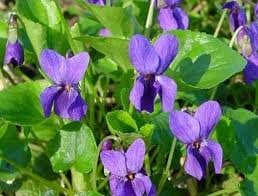 Violet – As a tea violet leaves are used as a blood purifier. Very effective and gives prompt relief in internal ulcers. Has been used as a treatment for cancer. For cancerous growths and other skin diseases, violet is especially beneficial when combined with red clover and vervain.
Violet – As a tea violet leaves are used as a blood purifier. Very effective and gives prompt relief in internal ulcers. Has been used as a treatment for cancer. For cancerous growths and other skin diseases, violet is especially beneficial when combined with red clover and vervain.
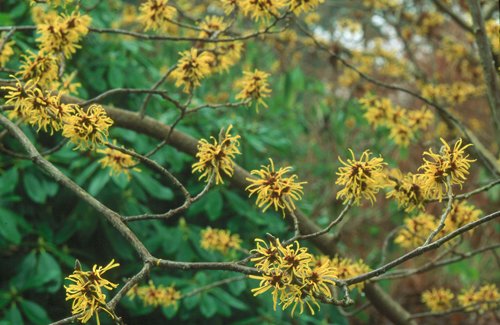 Witch Hazel – Is an astringent and is used to treat bruises, swells, and sprains and is a great skin tonic that also relieves insect bites and stings. Very valuable for stopping internal or external bleeding. Will restore perfect circulation. In nosebleed, snuff the tea up the nose. Witch Hazel from the store contains alcohol and not intended to be used internally.
Witch Hazel – Is an astringent and is used to treat bruises, swells, and sprains and is a great skin tonic that also relieves insect bites and stings. Very valuable for stopping internal or external bleeding. Will restore perfect circulation. In nosebleed, snuff the tea up the nose. Witch Hazel from the store contains alcohol and not intended to be used internally.
Yarrow – Leaves are used in salads. It reduces fever, and stops diarrhea, and prevents baldness. It is a good fertilizer and a natural activator in compost. Infusions are used on cuts and wounds. Lowers blood pressure.
